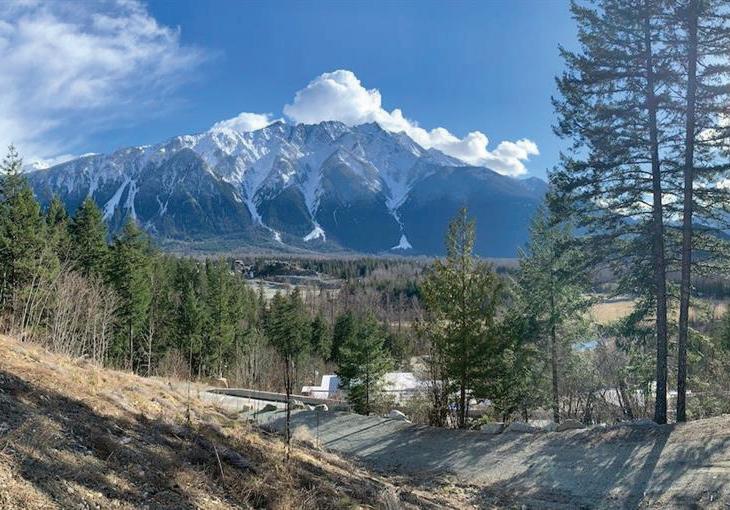
































































































































































































With “organic architecture” in Whistler, form follows nature over function. - By Rosa

Members of the Whistler Fire Rescue Service used new CPR equipment to save a life—mere hours after learning how to use it.
15 AT THE DOOR A wildfire burning out-of-control at Anderson Lake is threatening people’s homes and property.
O’ReillyA new development proposal envisions 45 apartment units in Pemberton’s downtown core.
Squamish brothers Jakob and Dane Jewett ascended to Canadian Open Downhill glory at Crankworx Whistler.

16 SUMMER SWING Whistler Blackcomb’s new COO
Belinda Trembath offers a mid-summer operational update.
The Lil’wat Nation’s Levi Nelson is among four artists chosen to design the 2025 Invictus Games brand.
COVER I still have mixed feelings about pulling out of university a week before I was to start a journey towards a life-long dream of becoming an architect. In the end I’m probably happier to just make the pictures and forget about all the math. - By Jon Parris // @jon.parris.art





























































Founding Publishers KATHY & BOB BARNETT
Publisher SARAH STROTHER - sstrother@wplpmedia.com
Editor BRADEN DUPUIS - bdupuis@piquenewsmagazine.com


Sales Manager SUSAN HUTCHINSON - shutchinson@wplpmedia.com
Production Manager AMIR SHAHRESTANI - ashahrestani@wplpmedia.com
Art Director JON PARRIS - jparris@wplpmedia.com
Advertising Representatives
TESSA SWEENEY - tsweeney@wplpmedia.com
GEORGIA BUTLER - gbutler@wplpmedia.com
Digital/Sales Coordinator ELA JEDRASIAK - traffic@wplpmedia.com
Production production@piquenewsmagazine.com
Features Editor BRANDON BARRETT - bbarrett@piquenewsmagazine.com
Arts Editor ALYSSA NOEL - arts@piquenewsmagazine.com
Social Media Editor MEGAN LALONDE - mlalonde@piquenewsmagazine.com
Reporters
BRANDON BARRETT - bbarrett@piquenewsmagazine.com
MEGAN LALONDE - mlalonde@piquenewsmagazine.com
ALYSSA NOEL arts@piquenewsmagazine.com
DAVID SONG - sports@piquenewsmagazine.com
Classifieds and Reception mail@piquenewsmagazine.com



Office and Accounts Manager HEIDI RODE - hrode@wplpmedia.com
Contributors G.D. MAXWELL, GLENDA BARTOSH, LESLIE ANTHONY, ANDREW MITCHELL, ALISON TAYLOR, VINCE SHULEY
President, Whistler Publishing LP
SARAH STROTHER - sstrother@wplpmedia.com
08 OPENING REMARKS In which editor Braden Dupuis plays around plotting plastic’s slow plod to planned obsolescence.
10 LETTERS TO THE EDITOR
This week’s letter writers call out misogyny in the local sports scene, advocate for better planning from politicians, and share a story of kindness in Whistler.
13 PIQUE’N YER INTEREST Columnist Andrew Mitchell takes a hard look at the music industry and comes to a sobering conclusion: music is broken.
which is an independent organization established to deal with acceptable journalistic practices and ethical behaviour. If you have concerns about editorial content, please contact (edit@ piquenewsmagazine.com). If you are not satisfied with the response and wish to file a formal complaint, visit the web site at mediacouncil. ca or call toll-free 1-844-877-1163 for additional information. This organization replaces the BC Press council (and any mention of it).
ISSN #1206-2022
Subscriptions: $76.70/yr. within Canada, $136.60/yr. courier within Canada. $605.80/ yr. courier to USA. GST included. GST Reg. #R139517908. Canadian Publications Mail Product Sales Agreement #40016549.
31 RANGE ROVER With Crankworx Whistler once again rocking the resort, columnist Leslie Anthony is feeling nostalgic.
40 EPICURIOUS Executive Chef Melissa Craig is leaving the Bearfoot Bistro after 20 years to return to the restaurant where she began her vaunted career, the Sooke Harbour House.

43 MUSEUM MUSINGS Now one of the most popular backcountry ski-touring trips in the region, the Spearhead Traverse route was first pioneered in 1964 by members of UBC’s Varsity Outdoor Club.

58 MAXED OUT As he prepares for a road trip to the Northwest Territories, Max draws parallels to Canada’s new tourism strategy. 40

Hilton Hotel - W histler Village

1 bed, 2 bath, 1146 sqft – INVESTMENT PROPERTY! The Hilton Whistler Resort & Spa offers the perfect mix of personal usage and revenue This “1 bed lock off suite” which is 2 separate units (#725 and #727) can be used separately or used together One side has 2 queen beds and the other has 1 king and a full kitchen. Use one side and collect the revenue on the other or use both, it’s up to you. Located at the base of Whistler Blackcomb with all the amenities you would expect from the Hilton brand. Get in touch today for revenue potential and owning in the heart of Whistler Village $939,000















CHRONICALLY
shoppers like myself will no doubt have noticed a change at most Whistler grocery stores—and at many other retail establishments—in recent months: plastic bags have all but disappeared.
Some stores still offer biodegradable plastic bags, but in most cases, if you left the reusable bag at home, your options are now paper or an unwieldy box—or, if you like to live dangerously, nothing at all.
Count me as the latter.
In my case, the immediate result of our overdue shift from plastic was several instances of a large, disoriented man first
BY BRADEN DUPUIScursing himself at the checkout counter for once again forgetting his reusable bags, then doing a quick mental inventory of all available pockets and trying to imagine which items might fit where.
Observe as he awkwardly overburdens himself, wedging a bunch of bananas under one armpit and jabbing a finger through the plastic on the toilet paper as a makeshift handle, cradling his car keys in his teeth, shuffling out to the car in a delicate dance of grocery delivery.
How many times can one man play this undignified game before he remembers to bring one of the two dozen reusable bags stuffed in his closet or hanging by the door?
More than you might think, it turns out.
The shift is necessitated by new federal legislation brought into effect in December, banning the manufacture and import for sale of several single-use plastics, including checkout bags, cutlery, food service ware, ring carriers, stir sticks and straws.
Such items won’t actually be prohibited until December of this year, to allow retailers time to transition and use up their remaining stock.
B.C.’s government is following suit, announcing this month it will bring in new legislation, also effective this December, banning plastic shopping bags, disposable food
service accessories, degradable plastics and any packaging made of hard-to-recycle plastics.

As mentioned, it’s long overdue. According to earth.org, more than 8 million tonnes of plastic enter our oceans every year, and plastic pollution in the oceans is on track to grow to 29 million metric tonnes by 2040.
Estimates have long suggested that, by 2050, there will be more plastic by weight in the ocean than fish.
Meanwhile, at least 100,000 marine animals die each year from getting entangled in plastic.
Those that survive are often still ingesting plastic waste or microplastics, which in turn travel up the food chain to land on our dinner plates.
At the Resort Municipality of Whistler (RMOW), staff was considering a local plastic ban that would align with the 35 other municipalities that have instituted them in B.C., but opted to back off when it became clear other levels of government were going to lead the charge.


“Of note, the largest suppliers of plastic bags in Whistler have all voluntarily phased out plastic bags already, additionally lowering the need for a ban to be implemented,” a communications official said.
He likens those early exchanges to a flailing, angry teenager going up against a wise old man.
“He settled me down a bit, because I brought up plastics, and specifically singleuse bags, and he said, ‘Well, we’re going to get there, but give us some time, because if you get out ahead as a municipality you don’t necessarily get ahead, because it involves supply chains, it involves changes at both the federal and provincial level, and so give us the time that we need to get there,’” De Jong recalled.
But, as De Jong’s father might say, politics moves like “molasses uphill in winter,” and the ban has been slow developing.

“I’m relieved, and appreciative, as well, to the minister, that we’re getting there,” he said.

In the past, the argument against banning plastic bags in Whistler, or at least part of it, was about how it might impact the convenience of tourists.
The flipside of that argument is that Whistler is well-positioned to educate and inform guests on why transitioning from plastic is important.
“We’ve lost that traction that Whistler has had on being recognized globally for our environmental stewardship efforts, and it’s
is about 21 to 23 tonnes of CO2 per capita, annually, and in Europe it’s closer to five or six tonnes.
“In order to hit our 2030 goals, we all need to be at five tonnes per capita in our Western economies, and that’s going to be very difficult for the North Americans, but if we don’t commit at the individual level we’re just not going to get there,” De Jong said.
“There’s many upsides to it. Riding our bikes more, [switching to] meatless diets, there’s cost savings, and we can actually be healthier and happier; trying to fix our ailing planet, we, in many ways, fix ourselves.”
As a childless adult who drives a newish car; eats, shops and recycles consciously; and who flies sparingly; my personal carbon footprint is somewhere in the five-to-10-tonne range, annually, according to ClimateHero’s Carbon Footprint Calculator.

That makes me a “climate consumer”— not quite a climate hero (under two tonnes) or even a climate friend (two to five tonnes), but still not a climate villain (more than 10 tonnes).
The ban on plastic will force people to change, or at least stop to consider, their consumption and shopping habits. That one is low-hanging fruit. Inspiring the necessary
“The RMOW has supported the transition away from plastic bags for some time, originally with a student-led initiative. We will continue to work with the hotel, grocery store and restaurant sector to provide sustainable solutions moving forward.”
Banning single-use plastic in the resort has been a goal of Councillor Arthur De Jong since before he was first elected in 2018, and he’s had more than one meeting with provincial environment minister George Heyman on the topic.
time to be stepping up more and more again,” De Jong said.

“This is just an opportunity to engage our guests in a very positive way, so I don’t see downsides on this … Let’s just get on with it.”
While meeting our lofty climate goals will of course require governments to act—all governments—that doesn’t give any of us a pass on personal responsibility.
De Jong noted the individual carbon footprint of the average North American

shift to cleaner transportation will take more effort, or more widespread adoption of new clean technology.
But governments are well aware of that.
“As planners, we need to get smarter and smarter to outcompete, outconvenience, and outhealth—[we need to] get you to want to do it,” De Jong said.


“[One person using reusable bags] is a drop in the bucket, but when it becomes a trend, a trend becomes a market shift, and markets respond very quickly.” ■

“We’ve lost that traction that Whistler has had on being recognized globally for our environmental stewardship efforts, and it’s time to be stepping up more and more again.”
-ARTHUR DE JONG
D ea r reader s ,
Yo u r a cce s s to l o c a l , p rov i n cia l a n d nat i o na l n ew s i s go i n g to b e revo ke d o n G o o g l e, Fa ce b o o k a n d I n s t a g r a m
A n d i t ’s n ot b e c a u s e of a ny t h i n g we ’ ve d o n e.
Re ce n t l y, C a na da p a s s e d t h e O n li n e N ew s Ac t , a l s o k n ow n a s B ill C-18 , w h i ch ha s l e d to a s t a n d off b e t we e n t h e gove r n m e n t , G o o g l e a n d M e t a t h e p a re n t co m p a ny b e h i n d Fa ce b o o k a n d I n s t a g r a m
B ot h G o o g l e a n d M e t a have s a i d t h ey p la n to cu t t i e s w i t h t h e n ew s i n d u s t r y i n C a na da a s a re su l t .
T h i s m ea n s M e t a w ill b l o ck t h e p o s t i n g a n d s ha r i n g of o u r n ew s a r t i cl e s o n Fa ce b o o k a n d I n s t a g r a m G o o g l e w ill a l s o re m ove li n k s to o u r s i te s a n d a r t i cl e s i n G o o g l e N ew s , D i s cove r a n d s ea rch re su l t s .
T h ey ’ll a l s o c a n ce l s i g n i fi c a n t co n te n t li ce n s i n g a g re e m e n t s a l rea d y i n p la ce w i t h o u r p a re n t co m p a ny, G la ci e r M e d ia .
U n d o u b te d l y, t h i s w ill have a h u ge i m p a c t n ot s o l e l y o n u s b u t , m o re i m p o r t a n t l y, o n p e o p l e like yo u r s e l f w h o may u s e t h e s e p l at fo r m s to d i s cove r w hat ’s ha p p e n i n g i n yo u r co m m u n i t y a n d to ge t co n tex t to eve n t s ha p p e n i n g i n yo u r ow n b a ck y a rd .
We ’re n ot p la n n i n g o n go i n g a ny w h e re, b u t h e re ’s h ow yo u c a n h e lp:
1. Sign up for our free daily newsletter by scanning the QR code. (And encourage your family and friends to do the same )

2 . Fo l l ow u s o n Twit te r.
3 B oo k m a rk o u r we b s ite a s th e h o m e pa ge o n yo u r d evi ces
4 . Consider becoming a member if you aren’t already. Your suppor t will help us continue to cover local stories, by locals

5 . I f yo u own/o p e rate a l oc a l b u s i n ess , co n s i d e r s u p p o r ti n g l oc a l by p laci n g ad s with 100% C a nad i a nown e d m e d i a o utl et s , l i ke u s .
W i t h yo u r h e lp, m o re p e o p l e w ill b e a b l e to ge t t h e i r l o c a l n ew s fro m a t r u s te d s o u rce I n to day ’s a ge of m i s i n fo r mat i o n , t hat ’s m o re i m p o r t a n t t ha n eve r.
T ha n k yo u We a p p re ciate yo u
Si n ce re l y,
T h e Pi q u e N ew s ma g a zi n e tea m
Navigating a male-dominated area as a woman can be incredibly tough. It’s disheartening to witness how many men in the Sea to Sky region are idolized simply for their athletic talent, coaching skills, or online presence. Unfortunately, this admiration often leads to the dismissal of concerning behaviours exhibited by some of these men. I have personally met women in this area who have endured verbal, physical, and emotional abuse, only to log onto social media and be bombarded with videos and comments that praise their abusers. The overwhelming support for the perpetrators can make it incredibly difficult to speak up, as it feels like the whole world is on their side.
When I chose to speak up about my experiences, I was met with misogyny and dismissive responses like, “She’s only saying that because she’s bitter.” The mental and physical toll it took for me to find the courage to speak out is often disregarded or misunderstood. Sadly, I’ve also learned of numerous stories from other women and teen girls who have suffered severe forms of abuse, such as being pushed into walls, berated, sexually assaulted, or isolated by men who are admired for their sporting abilities.
I was shocked when a group of pre-teen girls I work with informed me that their teacher advised them never to “hurt a boy’s feelings”
by refusing to dance with them when asked. Girls are being taught in our schools that a boy’s feelings are more significant than her boundaries. The mentality that abuse against women is solely physical and the “boys will be boys” attitude contribute to a dangerous environment within this community.
However, speaking up is essential to break this cycle. Despite the fear and apprehension, it is a necessary step toward creating change. It’s important to realize that there is support available within this community. Organizations such as


Pemberton RCMP, Whistler Victim Services, and Sea to Sky Community Services have been incredible in supporting me. I’ve been fortunate to work in environments that prioritize my mental health and have encountered countless amazing individuals who continue to offer their support.


It’s crucial to work towards ending the normalization of male superiority and to live in a community where every person feels safe, respected, and valued.

Find more info and resources at hswc.ca.



 Kristyn Johnson // Pemberton
Kristyn Johnson // Pemberton



Like many people, Braden Dupuis believes Highway 99 traffic will continue to get worse, and tells us unashamedly that he is a regular contributor to the issue himself (see Pique, July 14). Despite all the negative social, environmental, medical and economic impacts inherent in his choice of transportation, Mr. Dupuis presumably drives because he finds it quick, cheap and convenient.
But why is it so? For the past five generations, timid and unimaginative North American politicians have almost universally understood that it is their mandate to accommodate personal motor transportation rather than to manage it. Motor traffic volume is not a random act of God, nor does it obey any particular law of physics or chemical formula. We get exactly the amount of traffic that we plan for! Would Mr. Dupuis still consider driving to be the best option if we reduced the highway speed limit for personal vehicles to 50 km/hr from Function Junction to Emerald Estates and if we simultaneously established dedicated express bus lanes, free of fare, with speed limits of 60 km/hr (to be shared with cyclists and e-cyclists)? How’s that for quick, cheap and convenient? And 100 times safer than driving! For those currently motoring in from farther away, why not also establish free transit service every 30 minutes to and from Pemberton and Squamish? For those coming up from the Lower Mainland, how about
instituting regular passenger rail service to Creekside, with a shuttle bus connecting every arrival with the village? Even if such measures were to be reproduced across the country, their collective cost would likely be less than the $13 billion that Ottawa just granted Volkswagen to build electric cars, as if emissions were the only problem associated with over-reliance on driving! If funds, however, should fall a bit short, why not collect more tax on gasoline?
young lady ahead of me in line had a card that refused to work and insufficient cash to pay. So I bought her groceries for her.
I tell you this not in any spirit of selfaggrandizement, but because I want that sweet young man—if he is even reading this—to know that I did pay it forward, and that I was blown away by his kindness. Thank you. And how good is it to know there are people like him in our town?
Linda McGaw // Whistler

A passenger rail line between Vancouver and Whistler would solve so many problems—and the infrastructure’s already there.
After 100 years of planning civilization around cars rather than around human beings, isn’t it time our politicians summoned the courage to plan for mankind instead of autokind? We’d all be much safer, healthier and happier.
Thomas DeMarco MD // WhistlerKindness is ‘alive and well’ in Whistler
I would like all to know that the spirit of selfless kindness is alive and well in Whistler.
On Thursday, July 20, I picked up a package at the post office that proved to be a very heavy box, too heavy for me to carry to my parked car.
The nice post office lady brought a dolly, but I knew the box would be too heavy for me to lift off the counter or into my trunk.
At that point a young man behind me in line, a total stranger to me, said, “I’ll carry it for her,” and he did! Out to my car parked by the drug store and into the trunk.


I offered him a reward, but he refused. How kind was this? So I told him I would pay it forward.
Not 30 minutes later at the supermarket, a
There’s a problem with our current city-toresort shuttle services: they all operate on the same roads that house Whistler’s legendary traffic. Sure, they’re affordable and they offer a good alternative for people who don’t own cars, but they’re still subjected to the same issues that plague buses in the city. A passenger rail line would not only ease that issue and make Whistler a more welcoming place to carless families—it would bring more business and increase the potential for Whistler’s own transit system to grow.
I know… the last thing we all want is even more tourists crowding Whistler’s streets and ski runs. It’s hard to positively frame a rail line in a way that won’t upset the locals and elitists. But (here we go), more public transit means fewer cars. Fewer cars means less stress on roads, fewer accidents, fewer traffic jams and less noise in town. It means less space dedicated to cars, creating more room for business, leisure and culture.
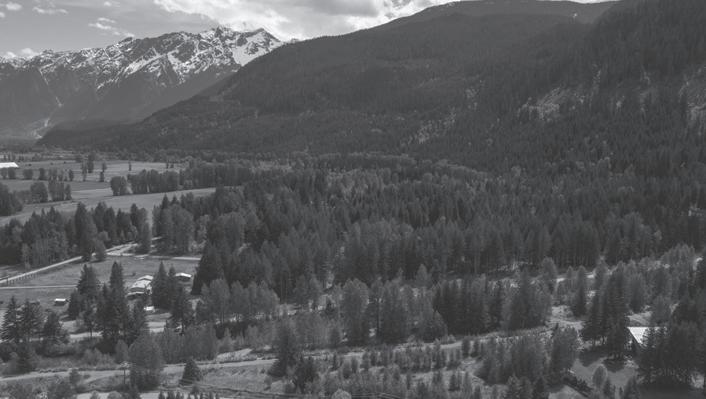
As someone who has lived in Europe and experienced the magic of taking the train from ski town, to city, to ski town, I would love to see a passenger train connecting Vancouver and Whistler. And—best yet—the rail’s already there.
What are we waiting for?
Matt Shipley // North Vancouver n

• 3 Bedrooms + Study, 2 Bedroom
• Quiet lot with loads of sunlight & fabulous mountain views
• Home and property are meticulously maintained $3,249,000


“I offered him a reward, but he refused. How kind was this?” - LINDA MCGAW
We l co m e to P i p e r s Pe a k ! a n exq u i s i te l y re n ovate d m a ste r p i e ce i n t h e p re m i e r g ate d co m m u n i t y o f B l a c k Tu s k Vi l l a g e j u st 1 2 m i n s s o u t h o f W h i st l e r Co m p l e te l y re d o n e a n d fi n i s h e d i n J u n e 2 02 3 P i p e r s Pe a k i s fo r t h e d i s ce r n i n g b u ye r w h o a p p re c i ate s q u a l i t y c ra f t s m a n s h i p a n d fi n e d e t a i l s O f fe re d t u r n key t h i s h o m e b o a st s v i ews o f B l a c k Tu s k w i t h p l e n t y o f s u n s h i n e o n a g e n e ro u s s i ze d l o t A s h o r t wa l k i n t h e b a c kya rd j u st p a st t h e c u sto m s a u n a b r i n g s yo u to t h e n o r t h e n d o f t h e n e i g h b o u r h o o d ’s p r i vate l a ke i d e a l fo r c a n o e i n g , p a d d l e b o a rd i n g a n d sw i m m i n g Fe at u re s i n c l u d e n ew re c l a i m e d h e a r t p i n e h a rd wo o d fl o o r i n g wo o l c a r p e t i n g , c u sto m s o l i d -wo o d m i l l wo r k f ro m E l mwo o d K i tc h e n s i n c l u d i n g : e n t r y c a b i n e t m a i n fl o o r b at h ro o m c a b i n e t r y a n d k i tc h e n w i t h b u i l t - i n s a n d h i d d e n a p p l i a n ce s , co m p l e te l i st ava i l a b



J o s h C ra n e 6 0 4 9 0 2 6 1 0 6 | j o s h @ j o s h c ra n e c a w h i s t l e r r e a l e s t a t e m a r ke t c o m

120-4090 Whistler Way




Whistler B C V8E 1J3




THE MUSIC INDUSTRY has always been a bit of a mess, with labels stealing music and exploiting talent, “payola” determining who makes it and what songs get played on the radio, artists self-destructing on drugs and alcohol, and all kinds of other shady practices that make Wall Street excesses seem almost benign by comparison.
BY ANDREW MITCHELL
And then, as a Russian would say, it got worse.
The arrival of compressed digital music made it impossible for artists and labels to sell albums anymore, eventually locking them into a model where they can either have their work pirated on torrent sites or accept the measly $0.003 to $0.005 that Spotify pays out per stream. (Other services like Tidal pay about $0.013 per stream, but it’s still a pittance compared to the revenues and commissions the industry used to earn from record, tape and CD sales.)


A lot of bands are struggling to survive in this heavily compressed and lo-fi world unless they tour constantly, hawk T-shirts between songs, and keep raising their ticket prices. If you’re really lucky, your song will get picked for a car commercial.
One of my favourite prog-rock bands, And You Will Know Us by the Trail of Dead , chose to disband this past March after their label left them stranded in Europe and they had to crowdfund their way between venues. This tour was in support of a new album that was well-reviewed and definitely deserved better.



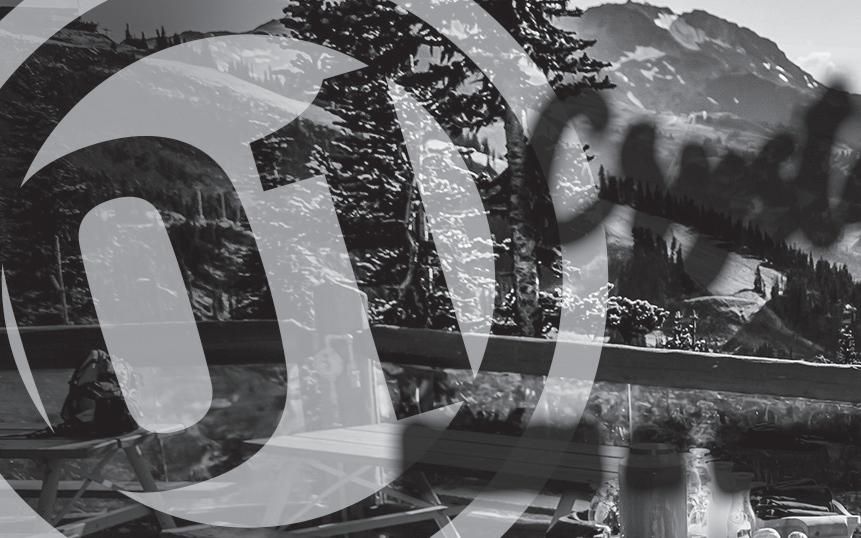
Another favourite, G. Love & Special Sauce, is still touring after 30 years, but it’s not the same. Twenty years ago the band was a sevenpiece with a massive sound and stage presence and now it’s a talented trio—presumably because you don’t have to split the box office in as many ways. They deserve better, too.
On the other side of failure is runaway success, with a handful of artists like Taylor Swift making tens of millions from billions of streams while selling out massive tours where people will seemingly pay anything to get tickets.
Even then, T-Swizzle has had her downs. A few years ago, someone bought her entire early music library from her label, then resold it for as much as $450 million to a hedge fund. She doesn’t own a lot of her songs anymore. And now she seems to be the victim of ticketing shenanigans that are hurting her biggest fans.

Enter Ticketmaster, among the most hated companies in the world. Its hidden service and convenience fees have been bumping up the cost of live music, sports and other events for a long time, prompting
hearings in the U.S. Congress, rebukes and investigations from our House of Commons, and even a CBC/Toronto Star investigation into its “secret” resale program. (Resellers who run bots that buy blocks of tickets faster than the public and immediately resell them for a profit on StubHub—which is owned by Ticketmaster—were advised by the company how to create multiple accounts to get around the theoretical ticket limit.)

Most recently, in response to the outcry from millions of Swift fans, the U.S. government now requires online services like Ticketmaster to include all fees upfront instead of burying them on the checkout page, but that’s it. It doesn’t come close to addressing the core problem of one company basically controlling the entire event industry.

Ticketmaster owns Live Nation, which owns House of Blues. As noted, it also owns StubHub, which means it earns convenience fees on a lot of tickets twice.






Of course, ticket resales (once referred to as “scalping”) is technically illegal in a lot of jurisdictions, but Ticketmaster/StubHub gets around that by calling it a ticket resale site, and governments in general have been cool with it. Ontario did try to impose a limit on how much you could jack up the price of a resale, but the Ford government bailed on that by claiming it was unenforceable.
And then it got worse. Not content to merely own ticketing and ticket resales, Ticketmaster is now busy signing exclusive
contracts with venues so you can’t avoid paying its fees or bypass them by purchasing tickets at the box office. It is also signing deals with artists to ensure it has exclusive rights to sell their tickets, and in some cases it is not even producing those tours.

And, in another disturbing example of industry consolidation, Live Nation recently bought the Opera House, a popular live music spot in Toronto. That means you have to buy their tickets and pay their fees to see only the artists that want to work with them—as if the artists have a choice anymore.
You’d think government might step in at one point to break up this monopoly, but they don’t seem to want to touch it. I can see why. For countries dealing with war, climate change, natural disasters, homelessness, and all kinds of other more serious issues, an optional extra like buying tickets to see live events isn’t much of a priority. But there is a consumer protection angle here that would make it easy to chop off one of the hydra’s heads—ticket reselling.
There is no good reason for StubHub to exist. With the technology, people who can’t use their tickets should be able to easily resell them at cost to the next person on the waitlist. Ticketmaster could even charge $10 for the transaction and nobody would complain. But allowing people to resell at a profit has created a monster that is hurting music and sports fans.
The music industry, of all industries, should be cool. It’s not. Music is broken. n
LOCAL FIREFIGHTERS DEPLOYED THE ZOLL AUTOPULSE, PURCHASED WITH COMMUNITY GRANT FUNDS, DURING A CARDIAC ARREST CALL HOURS AFTER COMPLETING TRAINING WITH THE EQUIPMENT
 BY MEGAN LALONDE
BY MEGAN LALONDE
A NEW CPR DEVICE was barely out of the box when Whistler firefighters used it to save a patient’s life last week.
The incident occurred when career staff from the Whistler Fire Rescue Service’s (WFRS) Village Gate station responded to reports of an individual in cardiac arrest last Thursday, July 20, shortly before 9:30 a.m.
Luckily for that patient, WFRS had put its new ZOLL AutoPulse CPR device into service earlier that morning. Firefighters had just completed training on the device during their shift the day before.
“The crew starts at eight o’clock [a.m.] here, and they were just getting the truck checks completed when a call came in at 9:22 for a cardiac arrest,” explained WFRS chief Thomas Doherty in a video call. “That was one of the crews that had just been trained, so they grabbed the device and threw it in the truck and responded to the call.”
The device was recently purchased with the help of just over $53,700 granted to the
Whistler Professional Firefighters Association this spring by the Whistler Blackcomb Foundation, supplemented by an additional $10,000 from the Whistler Health Care Foundation. The equipment arrived at the Whistler Fire Station “a couple of weeks ago,” Doherty said.
The AutoPulse Resuscitation System is designed specifically for patients suffering from cardiac arrest. The automated machine provides continuous, consistent compressions, even if first responders are transporting the individual down stairwells, around sharp corners, or in cramped elevators where crews would typically need to pause traditional chest compressions. “This particular device uses a distributing band that goes around the chest, so when it does a compression, it actually compresses the whole chest cavity as opposed to the typical overthe-sternum pressure,” Doherty explained.
“The profusion rates are way higher with this device compared to standard methods of chest compressions,” he added, or about 33 per cent.
According to data Doherty has seen, use of the AutoPulse device during a cardiac arrest response resulted in an 85-per-cent drop in chest-compression interruptions, and a higher rate of cardiac patients who survive to be discharged from the hospital.
These are “all key pieces to giving the patient the best possible chance of a positive outcome,” Doherty noted.
When firefighters arrived at the scene last Thursday, outside of a residence in the
4600 block of Blackcomb Way in the Upper Village, bystanders were already performing CPR on the patient. The WFRS crew deployed the AutoPulse device in addition to its Automated External Defibrillator. “Through their efforts, they regained a pulse back,” said Doherty. The patient was transferred to the Whistler Health Care Centre for further treatment.
It’s “pretty amazing that we had it in service for just over an hour and we saved a life,” Doherty added in an email.
The AutoPulse device is intended to help Whistler’s firefighters “fill the gap in pre-hospital care,” the Whistler Blackcomb Foundation said in a release last month.
If it wasn’t already clear, the WFRS’ scope extends far beyond just fighting fires. The department is part of a layered first-responder program that typically sees BC Ambulance Service dispatchers task WFRS with responding to the most serious medical calls that occur within the resort. Doherty estimated about 400 to 500 of the approximately 1,300 calls WFRS crews respond to each year are for medical emergencies.
In most of those cases, firefighters are first to arrive on-scene. “We have stations throughout the community, but there’s just one ambulance station here on Lorimer,” Doherty explained. “In this particular call, we did arrive on-scene first, and started the protocol before ambulance arrived, but it’s a combined effort. It takes a lot of resources when you’re dealing with somebody in cardiac arrest.”
Community grants like the ones that paid for the AutoPulse are “extremely important” to the municipally-funded WFRS, Doherty said. The device was “something we probably weren’t going to be able to purchase this year. We put requests in through the [Resort Municipality of Whistler] budget process, but there’s a lot of pressure on the financial budget and taxation, so we want to be very careful with that,” he explained.
“When we’ve got community groups like this that are providing funding opportunities, we want to make sure we take a good look at those and use those for valuable assets that will really provide a benefit to the community.”
The successful cardiac response wasn’t the only highlight for Whistler firefighters on Thursday. According to Doherty, firefighters responded to a call at about 7:20 p.m. that same day to help a patient who was reportedly choking at a local restaurant.
“When they arrived at that call, the patient was in cardiac arrest as well,” Doherty said. “Through the work with the team there and BC Ambulance on-site, they resuscitated that patient as well. So that was a good day for us where we had two lives saved.”
Is two cardiac arrest calls in a single day out of the ordinary for the WFRS crew?
“Sometimes when it rains it pours,” Doherty said.
“It is good for the crew to know that they put their best foot forward and to get a positive outcome like that. It’s pretty uplifting for them.” n
TRAINING DAY A Whistler Fire Rescue Service crew learns how to use the ZOLL AutoPulse CPR device during a training session last Wednesday, July 19. Little did those firefighters know, they would use the equipment in a real-life scenario during a cardiac arrest call the following morning.Offering owners unlimited use of their apartment, this popular 2 bedroom / 2 bathroom floor plan in the Hilton Whistler hotel is perfect for couples or families. Full kitchen, fireplace, balcony, owners-storage, convenient location at the base of Whistler Mountain, with heated pool, gym, shuttle, concierge and 5-star service.

Personal Real Estate Corporation



Engel & Völkers Whistler



Phone: +1 (604) 932-8899
Email: connect@whistlerforsale com
CASPER CREEK WILDFIRE NEAR ANDERSON LAKE, A POPULAR REFUGE FOR LOCALS, AT 2,000 HECTARES IN SIZE
BY BRANDON BARRETTFOR MANY WHISTLERITES seeking respite from the hustle and bustle of a tourism town that hosts millions of visitors a year, Anderson Lake has proven a welcome refuge.

Located roughly 50 kilometres northeast of Pemberton, the area has long been a draw for local recreationalists and vacationers looking for a rustic alternative to the corporate sheen of Whistler. For the dozens of cabin-owners dotting the lake, it offers the chance to tune out from the usual rhythms of resort life, away from wi-fi coverage and even a potable water source.
In recent days, however, Whistlerites’ home away from home has come under threat due to the nearby Casper Creek wildfire, a suspected lightning-caused blaze that is burning out of control and approximately 2,000 hectares in size.

“There are fires raging above us and around us. It’s hard to say how close. The closest might be a thousand or a couple thousand feet. It’s on parts of our driveway,” said Greg Daniells, who co-owns a rental vacation property on the far north end of the lake, along with his family’s cabin on the opposite side of the lake.
At press time, the five-bedroom, twobathroom property was surrounded by flames on both sides, as Daniells, co-owner Victor Beresford, and a team of helpers have done everything they can to keep the blaze at bay.
“We’ve created a line of defensive sprinklers that holds off the fire from the south side,” said Daniells. “The whole property is surrounded by thick, whole forest, so we’re just trying to create a perimeter to make sure it’s wet, and then fight the small fires with hoses and stuff up the hill.”
Lincoln Ferguson, who also owns a family cabin on the lake, said he initially called in the fire on July 11, when it was “just a wisp of smoke.” He watched in the ensuing days as the blaze spread quickly through the area.
“It’s awesome, as far as seeing the power of it,” he said. “We were down looking at the fire and it was on both sides of the [railway]
tracks, as logs were rolling down. That’s what’s been causing a lot of the problems: logs on fire rolling down the hillside.”
At press time, there were 27 wildfire personnel onsite fighting the fire, in addition to several aircraft providing support. Fire crews have reportedly been hampered by steep terrain and the fire’s erratic behaviour.
“That just changes your level of caution when it starts to behave in that way, and the fact that it’s at a Rank 4 and 5 in different areas—that’s as bad as it gets,” said Jen Ford, board chair of the Squamish-Lillooet Regional District (SLRD).
As extreme weather events increase in frequency, like the numerous wildfires burning across the province that have made this summer the worst fire season in B.C.’s recorded history, and more people move to remote locales like Anderson Lake, the level of concern only deepens, Ford added.
“The fact that fire activity and the intensity of the activity is really changing points us back to the need to take care and be mindful of how to build in these more remote communities,” she said. “I think it’s certainly concerning when you look at the resources you have in that area and what it will take to evacuate them. The more spread out we become in this province, it’s concerning, because we need more resources, the costs go up, and the reality of managing those fires becomes really difficult.”
As of July 25, an SLRD evacuation order applies to 192 parcels in Electoral Area B, including the entire area of Seton Portage and Tsal’alh. An evacuation alert, which has been expanded to include the area between Mission Mountain Road and Madeline Creek, applies to 186 parcels, estimated to affect 271 people.
Residents under the evacuation order are asked to register with Emergency Social Services at the Lillooet Rec Centre at 930 Main Street, or by phoning 250-256-8524. An SLRD spokesperson said 207 people have registered so far in Lillooet, while a handful have registered in Kamloops.
The public is reminded to sign up for SLRD Alert to receive emergency notifications and updates at slrd.bc.ca/slrdalert. n
 BLAZE BATTLE Smoke billows from the Casper Creek wildfire, which, at press time, was burning out of control and sat at roughly 2,000 hectares in size.
BLAZE BATTLE Smoke billows from the Casper Creek wildfire, which, at press time, was burning out of control and sat at roughly 2,000 hectares in size.


 BY BRANDON BARRETT
BY BRANDON BARRETT
LOCAL ELECTED OFFICIALS last week got their first formal face-to-face with Whistler Blackcomb’s (WB) new Chief Operating Officer Belinda Trembath, who offered a midseason update on summer operations, as well as a look-ahead to the lift upgrades slated for this fall and winter. The former GM of Perisher Ski Resort in her native Australia, Trembath and her husband recently settled in Whistler, and she spoke to the common thread uniting mountain resorts across the globe.
“Mountain resort communities are unique worldwide and yet share a deep love of the mountains which connect all of us,” she said at the regular meeting of council on Tuesday, July 18. “I’m grateful for the Whistler Blackcomb team and the many members of this community who have been so willing to share their knowledge, care and expertise. It’s been both humbling and energizing at the same time.”
Before offering an update on the summer season so far, Trembath spoke to the importance of the relationships WB has forged with the local Lil’wat and Squamish First Nations. The comments came on the heels of Lil’wat Nation Chief Dean Nelson declining to

re-sign a Framework Agreement last month between the Nations, the ski resort, the Resort Municipality of Whistler, and the province, claiming that the relationship with the Lil’wat has never really been developed, despite his requests. The ceremony was expected to be a mere formality after the parties were unable to hold an in-person ceremony when the agreement was originally inked in 2020.
“The importance of our partnership and the meaningful engagement with our First Nations communities cannot be underestimated. Listening to their stories, learning from their incredibly strong connection to the land and from their prioritization of family and community is enriching and inspiring,” Trembath said. “We still have much work to do, and this will be a priority for me as I settle in, and beyond.”
Trembath said while visitation to the ski resort so far this summer is trailing behind last year, when pent-up demand for domestic travel was strong coming out of the pandemic, business has stayed consistent.



“We’re seeing a nice, steady pattern of visitation,” she said. (WB does not share business figures publicly.) “It’s been a steady rise in visitation over the last month, and we’re starting to see more folks in the bike park. I think there was probably some hesitation from bike riders initially, from wanting to see what it was like with the Whistler Village
Gondola operating exclusively without the [Fitzsimmons Express]. I think it’s worked for us and we’ve had great, positive feedback.”





Asked if WB’s head office was “inspired” to invest in summer infrastructure at WB, given Whistler’s second season now sees more visitors than winter, Trembath said, “Nothing is off the table in terms of what we’re looking at as far as our Master Development Agreement goes, and looking for opportunities to draw people up into the alpine is important for us and we know it’s important for the community in terms of taking pressure off the village in the summer.
“We’ll continue to look at opportunities to invest in summer where it makes sense to do so.”



The anticipated replacement of WB’s Fitzsimmons Express chairlift is moving ahead of schedule, Trembath told officials last week.
Announced last September, the plans to replace the existing four-seater with a highspeed, eight-person chairlift is meant to majorly boost uphill capacity from Skier’s Plaza. Trembath noted the new lift’s return and drive stations are already installed, while placement of the tower foundation continues, and concrete pours were slated for completion last week.
Installed in 2000, Fitz has long been the primary workhorse for the Whistler Mountain Bike Park, typically seeing more traffic from riders in the summer than from skiers and snowboarders in the winter. As


work got underway on the Fitz replacement, bike park upload shifted to the Whistler Village Gondola.
“Watching the progress of the Fitzsimmons lift project alongside the reimagined bike park, loading onto the Whistler Village Gondola has been a testament to teamwork and collaboration,” Trembath said.
Meanwhile, the first phase of WB’s replacement of its four-seater Jersey Cream on Blackcomb Mountain officially got underway on July 19, Trembath said, with testing at the bottom lift terminal to help determine the most suitable foundation design for the new high-speed six-pack that will take its place.
WB hopes to install between five and seven tower foundations and completely reroute its high-voltage distribution and snowmaking infrastructure this summer as part of the Jersey Cream replacement, work that will continue “well into the fall as we seek to minimize the disruption to our alpine hiking community,” Trembath went on.
“Our drive is to complete as much of the work as possible this year to give us a head start on next year’s aggressive construction timelines, given this lift’s location in the high alpine.”

The resort initially planned to upgrade Jersey Cream in 2023 as well, but confirmed in April that construction on the replacement would be delayed by one year. n






























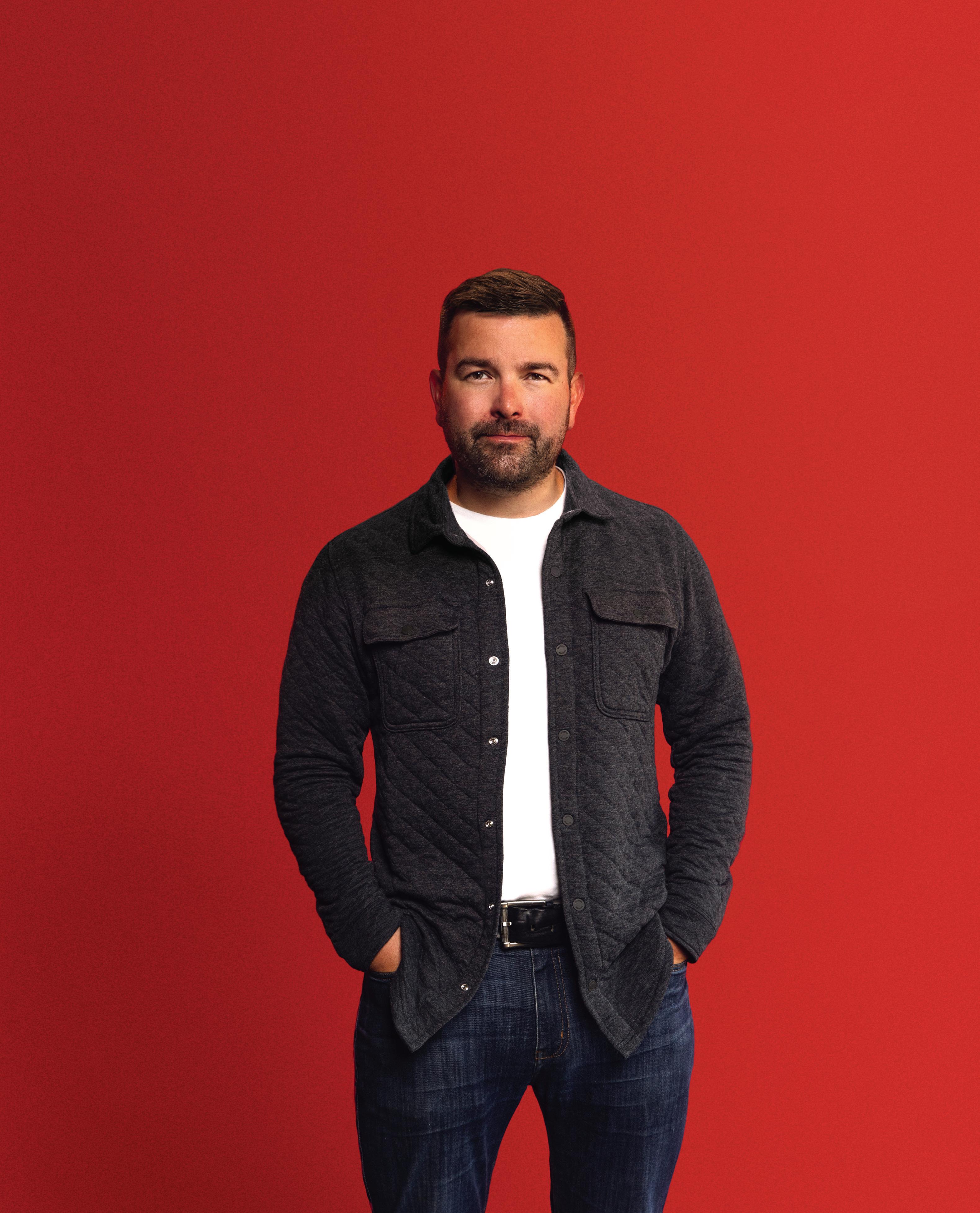

 DAVID LEWIS – RENNIE ADVISOR - WHISTLER
DAVID LEWIS – RENNIE ADVISOR - WHISTLER
THE COS SAYS YEARLING BLACK BEAR ENTERED TWO HOMES, ONE GARAGE ON JULY 15, AND ANOTHER HOME IN SPRING CREEK THE FOLLOWING DAY
BY BRANDON BARRETTA YOUNG BLACK BEAR was killed by conservation officers this week, after it had reportedly accessed several Whistler homes over a two-day span—including while people were still inside.
On Saturday, July 15, the Conservation Officer Service (COS) received reports of a bear entering two homes and a garage in Cheakamus Crossing. The garage and one of the residences the bear entered were occupied at the time, said Tim Schumacher with the COS.
“When the bear was in Cheakamus, it was very persistent with a homeowner. The homeowner was actually inside the house with the bear, and after the owner ended up getting the bear outside, it was trying to come back in and pawing at the windows. It also bluff-charged her inside the home,” he added.

The following day, on July 16, the COS received another report of a bear that had entered a home, this time in Spring Creek. Conservation officers determined it was the same bear that had accessed residences in Cheakamus based on multiple photos of the animal provided by onlookers.

In Spring Creek, the bear reportedly broke through a screen door and remained inside the home for “an extended period of time,” Schumacher said. The bear bluff-charged both the occupant when they tried to re-enter the home, and the attending conservation officer on the scene.
“The bear came out of the home and eventually bluff-charged the officer four
animal onsite in Spring Creek on July 16.
As Whistlerites try to beat the heat, Schumacher advised the public to use a stick or a stopper on their sliding doors so that they can’t be opened farther than the width of a small bear’s head, around 15 centimetres.
“We have also had issues with this in Nordic and that’s what was recommended at the time,” he said.





accessing the village on a daily basis throughout the day and the evening,” Schumacher explained. “We’ve identified some attractants in the village that are being addressed and it was more than one bear accessing the village. There were at least two. We’re trying to keep them out of the village as best we can.”
Saskatoon berry shrubs, which can grow up to five metres tall, have been in the village “as long as I can remember,” Schumacher said, but it’s only recently the COS has noticed black bears accessing them regularly.
“They didn’t really seem to be much of an issue in the past, and this year, particularly in the past week, the bears are climbing them and breaking the branches,” he added. “We’re identified it with the municipality and we’re working on a solution to make sure that attractant is secure from here on out.”
times, as close a distance of three or four metres away,” Schumacher added. “The responding officer was screaming at the top of their lungs and it was still approaching.”

The male bear, estimated to be about a year and a half old, was not tagged by COS and had no known conflict history. But given its rapidly escalating, aggressive behaviour, and the fact it had entered multiple homes, conservation officers made the call to kill the
As always, the COS urged the community to call in concerning bear behaviour and encounters early, “so we can intervene before bears get to the point where they’re entering homes,” advised Schumacher.
Conservation officers relocated a different black bear on Wednesday, July 19 after it had repeatedly eaten from Saskatoon berry shrubs in the village.
“We’ve had some bears persistently
This most recent death represents the second black bear killed by conservation officers in Whistler this year. In late April, an elderly, emaciated bear that had shown signs of severe malnutrition and was spotted bluffcharging people in and around the village, was shot and killed by the COS near the day lots.
The public can report wildlife-human interactions where public safety may be at risk by calling the Conservation Officer Service’s 24/7, toll-free RAPP line at 1-877-952-7277. n
“The responding officer was screaming at the top of their lungs and it was still approaching.”
- TIM SCHUMACHER






































THE SHORESIDE DIRT road where Thomas DeMarco pulled over to snap a photo in Mariehamm—the quaint capital of Åland, an autonomous archipelago off the coast of Finland—was picturesque, but it wasn’t the view of the Baltic Sea that prompted him to hop off his bike.
The longtime Whistler doctor instead paused his ride on June 24 to commemorate the spot where he officially reached a major milestone: 400,000 total kilometres cycled in his lifetime. About three weeks earlier, during a visit to the Netherlands on June 2, DeMarco also celebrated reaching 100,000 lifetime kilometres cycled in Europe.
“Every time I leave for a bike trip, people tend to ask me, you know, ‘How far are you going to ride?’ And I always say, ‘I don’t know. I record it, but I don’t have any objectives in terms of distance, so I’ll tell you when I get back,’” said DeMarco. “This is the one time when nobody asked me that question, and the one time when I did actually have objectives.”
In addition to his goal of reaching the six-figure milestones, DeMarco flew overseas with a third distance-related target: to ride 3,000 kilometres in a calendar month. “This is a rare time I thought, ‘I want to do all three
of those things in the month of June,’ so I did,” DeMarco said.
He clocked the significant milestones while cycling from Amsterdam to Stockholm last month. The trip, which took place from June 1 to 26, also brought DeMarco’s tally of European countries ridden in to 46.
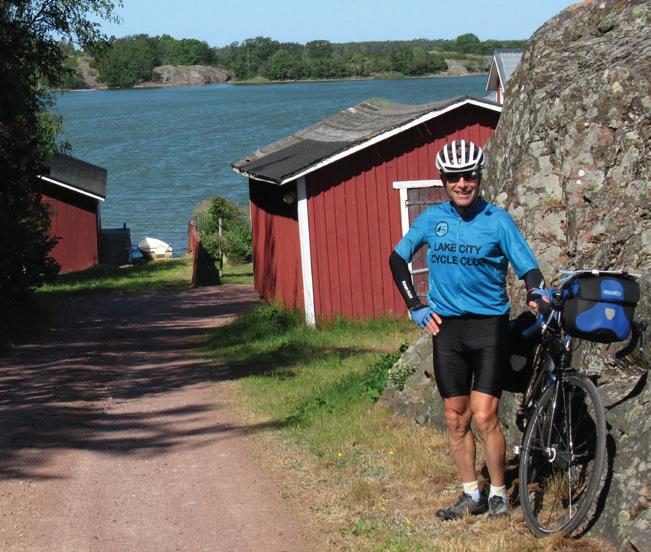
“It was one of my favourite rides in a long time in Europe, because those are really all of the most bicycle-friendly countries in the world—the Netherlands, Germany, Denmark, Norway, Sweden; these are all countries where bicycling is a normal form of transportation rather than some alternative form of transportation or recreation,” said DeMarco.
The family physician’s lifetime kilometre count is now equivalent to circumnavigating Earth at its equator 10 times, and is further than the 384,400 km separating Earth and the moon. Broken down, DeMarco’s tally represents biking an average of 20 kilometres every day for the 54 years he’s been keeping track.
DeMarco has recorded his bike distances with pen, paper and an odometer since he started delivering papers as a teen in Ontario’s Essex County. He makes a point of tabulating the total distances on his odometers after each trip, and at the end of each year.
Beyond his paper route, “I always wanted to know what was beyond the next intersection; around the next bend; over the
next river,” DeMarco recalled. “I’ve just had this curiosity all my life—I’m always looking for new roads.”
Naturally, when his sister started taking cycling trips to Europe in the late ’70s, DeMarco was inspired to join in. “It was just as good as I thought it would be, so I’ve kept on doing it ever since,” he explained. The locums he recruits to cover his practice have allowed DeMarco to continue taking multi-week bike trips throughout his last 27 years working as a physician in Whistler.
Closer to home, DeMarco can usually be found on his bike almost every day of the year.
“I think my longest streak ever was 400 days in a row,” he said. “The cold never stops me, but occasionally the snow is too deep and I have to ski or walk rather than ride.”
DeMarco’s decades of globe-spanning bike travels are memorialized in marked-up route maps and photos covering the walls of his Whistler garage.



Though he’s cycled extensively through North America, Australia, Morocco and a few countries in Asia, a map of the Lower Mainland is particularly difficult to read through Sharpie ink. DeMarco said he’s cycled every street in Vancouver, Burnaby, New Westminster and Richmond, despite having never called any of those communities home.

Reflecting on the hundreds of thousands of kilometres he’s ridden, DeMarco emphasized the enrichment and satisfaction he finds in active, self-powered travel.
“I think hiking and paddle trips are also excellent examples of that—it doesn’t have to be a bicycle—but it’s just so much more rewarding than the passivity of driving,” he said. “Of course, it’s not necessarily either or, you can combine different modes, whether it be driving or buses or trains. I would encourage people to broaden their horizons a little bit and not immediately associate all travel with a car. There certainly are other means that are not only more environmentally friendly, but also more rewarding.” n


















WHEN CHERYL GREEN looks for examples of residents that have aged well in Whistler into their golden years, she can’t help but think of one man: local visionary, lawyer, developer, and Freedom of the Municipality holder Garry Watson, who remained active as a passionate advocate for the resort up until his passing in April at 89.
“I had the pleasure of working with Garry Watson on a project, and to me, he was a prime example of living and aging well in Whistler, and I really applaud him and his wife for making it happen for him,” said Green, the communications and community engagement director for the Mature Action Community (MAC), at a council meeting last Tuesday, July 18.
Green and the other members of MAC, the resort’s senior advocacy group, want Watson’s experience to be the norm for Whistler’s older adults, part of the reason why the non-profit lobbied the Resort Municipality of Whistler (RMOW) to apply to be officially recognized as an Age-Friendly BC Community, as well as for an associated grant.
“As the chair of the 55-plus group here in Whistler, it’s our pleasure to represent the growing number of people relocating
to Whistler to enjoy their life in different stages of life,” said MAC executive director Kathy White to local officials. “It’s a grant to—like many other grants we apply for as a non-profit society—advocate and to engage with our local community, council and our network of communities of people. We highly recommend this grant go forward
in Whistler. Municipal staff recommended prioritizing two potential actions in the grant application: Explore existing emergency preparedness plans and how they meet older adults’ needs, and consider a campaign to bring awareness to older adults about current emergency preparedness plans. “This will enhance the community’s ability to proactively address the challenges and vulnerabilities faced by older adults, while providing older adults, caregivers and the wider community with key information in advance of emergency situations,” explained RMOW policy planning analyst Rex Lin.
considered air conditioning before, so we have to acknowledge that our environment is changing and ensure we have plans in place to help these people.”
Part of the goal is to gain a better grasp on where Whistler’s vulnerable residents are situated in case of an emergency.
“As Coun. [Arthur] De Jong is constantly reminding us, we live in a tinder box, and in the event of an evacuation, we need to know where those vulnerable people are, the ones that need help, and the ones that can’t get out on their own,” Jewett added.


and then we are ready to prepare a letter of support as well.”

Mayor and council followed MAC’s lead on July 18 by greenlighting the grant application through the BC Healthy Communities’ 2023 Age-Friendly Communities program. Administered through the provincial health ministry, up to $15,000 is available to support age-friendly planning and projects
Although no public consultation is required as part of the application, Lin said community engagement would be “an important aspect for the project” in determining any special needs and requirements for older adults in emergency situations, as well as identifying opportunities to “bridge the gaps to better prepare for emergencies.” If the application is successful, the RMOW said it would consult with groups such as the municipal Accessibility and Inclusion Committee, MAC, the Whistler Community Services Society, and Tourism Whistler.
“With the extreme weather events that we’ve had, during the heat dome [in 2021], the most vulnerable people were elderly people,” said Councillor Cathy Jewett. “One of the things in Whistler is we haven’t really

A successful grant application would also pave the way for the RMOW to apply for recognition as an Age-Friendly BC Community, allowing for Whistler’s agefriendly initiatives to be promoted on the BC Health Communities Society’s channels, as well as make it automatically eligible to receive official Pan-Canadian Age-Friendly Communities recognition, which is endorsed by the Public Health Agency of Canada and the World Health Organization.
It’s not the first time the RMOW has applied for grant funding through this program: in 2020, the municipality received funding to complete Whistler’s Age-Friendly Assessment and Action Plan, which it did the following year. The final report identified 30 strategies and 71 actions to support Whistler’s aging community. n

“[I]n the event of an evacuation, we need to know where those vulnerable people are...”
- CATHY JEWETT



 BY BRADEN DUPUIS
BY BRADEN DUPUIS
THE PANDEMIC MAY effectively be in the rear-view mirror, but businesses in
cost increases—[Employer Health Transfer], wages, property tax, supply costs, etc.—and now many businesses are supplying housing options due to the lack of affordable options to rent. Small businesses often have small margins and so we are sharing these issues
margins are being eroded quicker than expected,” Griffith said.
“Long-term sustainability of the Sea to Sky will be meaningful housing projects that allow people to affordably live.”
Whistler’s hotels, meanwhile, are “in a

holiday programs to fill gaps left when local applicants could not be found.”
At Whistler Blackcomb, the resort’s single largest employer, staffing levels are “in good shape heading into Winter, with positions for the 23-24 season continuing to be posted to
AS THE SURGE of floaties continues, the Resort Municipality of Whistler is looking to upgrade the River of Golden Dreams (ROGD).
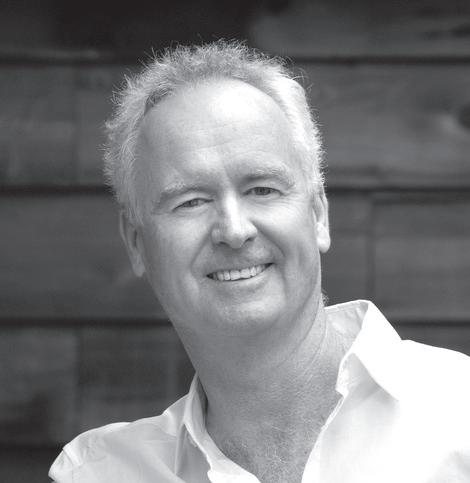
At its July 4 meeting, council authorized staff to apply to the B.C. Destination Development Fund to support a project enhancing the resort’s popular lazy river.
The municipality’s goal for the enhancement project is two-fold: protect the ROGD’s ecosystem by creating better habitat for fish and wildlife, and enhance the visitor experience by improving river usability for recreational boaters.

To accomplish that, the project envisions two key components: removing the current log weirs, and constructing and installing a “nature-like” fishway and weir to increase water levels throughout the canal.
The log weirs are believed to impede fish passage, and the furthest weir downstream is “causing sedimentation build-up and backwatering, which is inhibiting stream gradient, and therefore, reducing the potential for spawning habitat,” read a report to council.
The nature-like fishway and weir will be paired with a pull-out dock and trail funnelling users onto the Valley Trail. Users
will have to complete a 260-metre portage when downstream conditions are unsuitable or unsafe for boat travel.
The total cost of the project is estimated at about $520,000, with about $21,000 of that already spent on geotechnical reviews and engineering designs.
With that portion ineligible for grant funding, the total being requested from the B.C. Destination Development Fund is $498,604.
The critical project components, including
removing the old weirs and installing the new infrastructure, are estimated to cost about $347,000, and are included in the RMOW’s 2023-24 project budget lists.
Other project components, like widening the Valley Trail, adding signage and improving accessibility, are expected to cost an additional $170,000, and will only be completed if the grant application is successful.
The municipality plans to begin work on the project in August.
The work is overdue, as user numbers on

the ROGD have exploded over the past half decade or so.
“Over the past few years, user numbers per hour have doubled in the River of Golden Dreams, with the growth in users and increase in impacts being observed in the canal section in particular, which are amplified during lowwater events,” said RMOW environmental supervisor Tara Schaufele, in a presentation to council last summer.
“The public who unknowingly end up in the river during low water and spawning season can have a negative experience. In these instances, people are forced to walk in the stream bed or scrape the bed with their boats, which can be detrimental to the fish and is not a good experience for the user and to many users, can lead to visitor dissatisfaction.”
The current log weirs were installed in the 1990s without a full assessment. As a result, as time has passed, they have become less effective at increasing the quantity of water to usable levels for canoe passage during drier seasons.
“I see the kind of use this river is getting, and it makes me really sad,” said Councillor Cathy Jewett, last summer.
“I just hope that people can use it with more respect because we’re loving that river to death.”
- with files from Robert Wisla n
$1,999,000
Just a few minutes to the Whistler ski slopes, you will love the feel of this beautiful, well maintained home. From the bright, open kitchen/living area with fireplace & vaulted pine ceilings, enjoy magnificent views of Black Tusk & surrounding mountains. Features include 4 BR, 3 bath, family room with wood burning stove and an office/exercise space in the loft. Black Tusk Village is a recreation paradise, with world class skiing, biking and hiking trails in your back yard. Walk to the tennis courts or private lake, you can swim, kayak, SUP or visit the Clubhouse. Not reflected in the Sq. Footage, are a large 2 car garage & about 350 SF of exterior decks with spectacular views. This is an excellent family home, in a great community, nestled amongst world class amenities. Call today!










OFFICIALS GOT THEIR first look at proposed plans for a new 45-unit apartment complex in downtown Pemberton last week.
At its July 18 meeting, Village of Pemberton (VOP) mayor and council gave first and second reading to a zoning amendment bylaw for a 2,186-square-metre, or 0.21-hectare, parcel of land at the corner of Prospect and Aster streets. The Prospect Apartments project would “contribute muchneeded housing supply to the community to help alleviate some of the housing pressures,” VOP planner Mark Barsevskis told elected officials at the meeting.
STARK Architecture submitted the zoning amendment application on behalf of property owner Fitzgerald Building Co. in March. Three single family homes sit on the lot, currently zoned for commercial and residential use under a “Commercial Town Centre” designation.
The four-storey building proposed in the application would exceed maximum building height and fail to meet minimum parking allowances laid out in those existing zoning requirements. A successful rezoning application would raise the lot’s maximum building height from 10.5 metres, or three storeys, to 18 metres, and allow for about 20 per cent fewer parking spaces per unit.

To that end, proponents are asking for the lot to be re-labelled as a Comprehensive Development Zone.
Plans for the mixed-use residential complex include 1,000 sq. m. of commercial space on the ground floor; 45 residential units split among the other three flours—four studios, 29 one-bedroom units and 12 twobedroom apartments—plus 54 underground parking stalls (10 of those will feature electric vehicle charging connections and the remaining 44 will be electric vehicle ready); and 90 bike stalls.
The property owner would still need to apply for a major development permit at a later date before the project could break ground.
“This is just for the zoning. We’re not talking about the facade of the building; we’re not talking about the materials of the building … It’s just for the height and the parking,” Barsevskis underscored in his report to council.
At first glance, the project aligns with strategies enshrined in Pemberton’s Official Community Plan, such as supporting a variety of affordable housing ownership options for young families, first-time buyers, retirees and seniors.
A housing needs report brought to council last month estimated Pemberton will need to build 317 new studio or one-bedroom units and 134 two-bedroom units over the next five years in order to improve housing attainability in the community. If approved, the Prospect Apartments would put a 10.4-per-cent dent in the studio/one-bedroom target, and would contribute nearly nine per cent of the twobedroom units the assessment calls for.
A traffic impact assessment conducted for the project in January determined the 54 parking spaces proposed for the Prospect
Apartments would fall about 14 spaces short of current zoning requirements.
But as VOP staff noted in the report, that lower number of parking stalls would also help support transportation-centric strategies laid out in the Village’s Community Climate Action Plan.
“The proposed development enables carfree living in more attainable housing in the middle of Pemberton’s downtown core and includes storage for at least two bikes per new unit,” staff noted in the report, while electric vehicle charging facilities planned for the underground parkade would help electrify transportation in Pemberton.
Typically in Pemberton, officials agree to rezone land for development on the condition developers commit to providing a Community Amenity Contribution (CAC).
In this case, “Additional residential units in the community’s downtown corridor create numerous benefits: greater demand for local businesses, more attainable housing located near grocery stores—it’s just going to provide an active, lively and interesting downtown, and one could argue that is an amenity for the community in itself,” Barsevskis noted.
Still, VOP staff have already begun negotiating with developers about what a CAC could entail, with most ideas centred around streetscape or park enhancements near the project.
Officials in Pemberton didn’t seem particularly excited about those ideas. After hearing the July 18 report, Pemberton Mayor Mike Richman questioned “what improvements to parks and steetscapes

would look like, because we’ve just done an enhancement of that area.”
The application details plans for a market development that, at this point, makes no commitment to providing below-market rentals or ownership opportunities, as Councillor Jennie Helmer pointed out. To that end, the mayor wondered if the CAC associated with the project could instead take the form of a number of rent-controlled units, or something similar. “I think that that’s where we want to be going,” Richman said. “I agree that we want to take advantage of these sorts of situations to make sure that we’re providing some of these amenities to the community.”
Pemberton council will only consider final adoption of the bylaw once the applicant and VOP staff have finalized a development agreement detailing the corresponding CAC. Developers Fitzgerald Building Co. scheduled an in-person public information meeting that was slated to take place earlier this month, but that meeting was cancelled after an accident closed Highway 99. Though councillors also expressed concern about the lack of public feedback prior to first and second readings of the bylaw, Barsevskis said VOP staff feel confident moving the application forward, given the proposal does comply with Pemberton’s Official Community Plan.
“As we’re all aware, there is a shortage of housing in the community, and so in the interest of keeping project timelines reasonable, we’ve opted to proceed with the bylaw,” he explained.
After receiving first and second readings on July 18, the rezoning application is now headed to a public hearing, scheduled for Tuesday, Sept. 12 at 5:30 p.m. ■






Lear n the basics of carpentry, metal fabrication and textile craft! Students will first create a personal fur niture-scale object, and the week will culminate in the building of a collective community use pavilion structure that utilizes the techniques and skills lear ned. 10am - 3pm daily

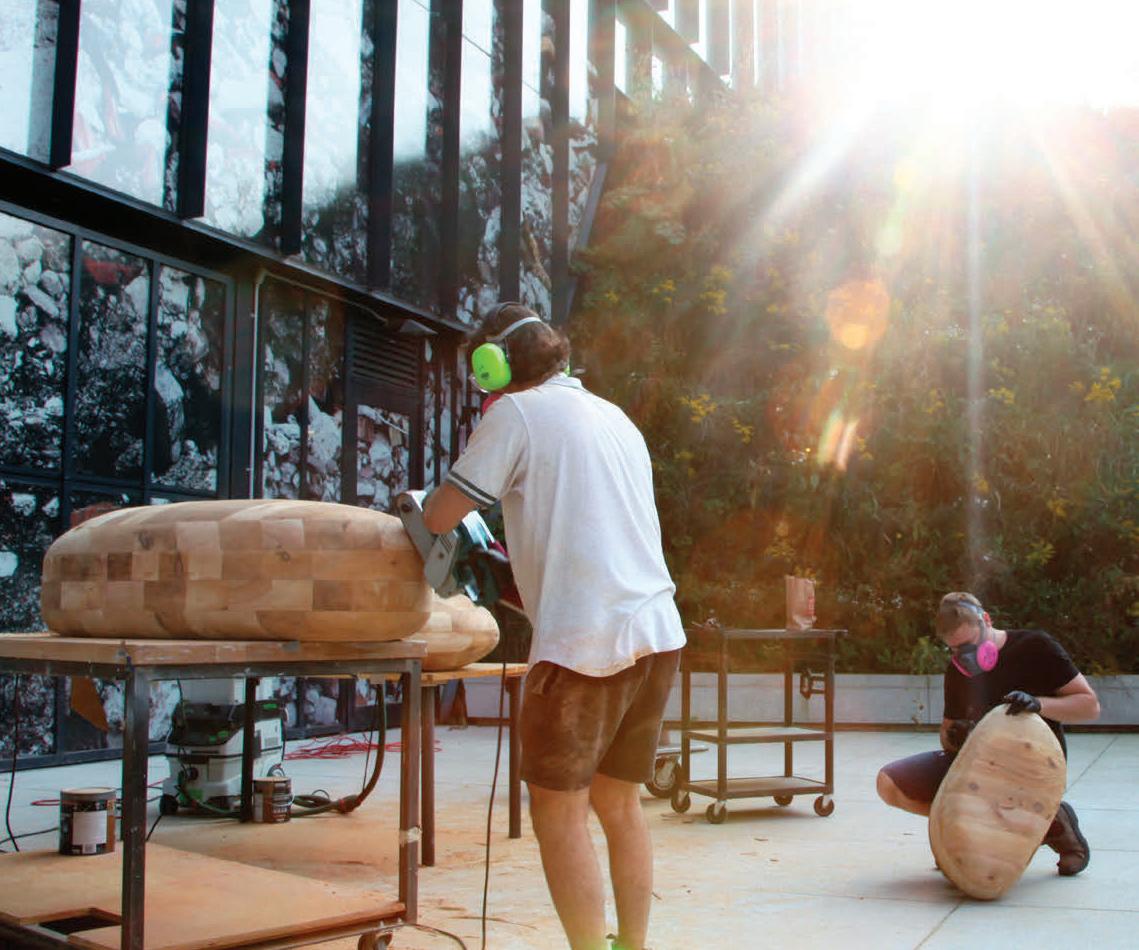
Designed for students ages 11-18.
$250 per person

Members save 10%



workshops at audainartmuseum com/upcoming-events-engagement



This Notice of Hazard is published in accordance with section 25 of the Freedom of Information and Protection of Privacy Act and pursuant to Squamish-Lillooet Regional District (SLRD)

Policy 7.3: Mount Meager Landslide Hazard Notification.
The SLRD is in receipt of a jour nal article entitled: “Hazard and risk from large landslides from Mount Meager volcano, British Columbia, Canada”. The article was published on March 1, 2008 in Georisk: Assessment and Management of Risk for Engineered Systems and Geohazards.

The article identifies a safety risk to persons and property from debris flows in the Mount Meager and Lillooet River valley areas as far south as the head of Lillooet Lake.
A copy of the article is available as follows:
• at the Pemberton & District Public Library; and
• on the SLRD’s website at: http://www.slrd.bc.ca/
war nings/mount-meager-landslide-hazard.
Dated this 25th day of July, 2023.
Craig Dalton Chief Administrative OfficerTOO MANY PEOPLE are consuming more than Earth’s systems can replenish. But while population growth is an important issue, overconsumption of energy and products is the more immediate and easily resolvable problem.
The wealthy, including middle-class people in rich countries, are responsible for many times the climate-altering emissions of lower-income people—the super rich especially. The Stockholm Environment Institute estimates that the world’s top 0.1 per cent emitted 10 times more per capita than the rest of the richest 10 per cent combined, more than 200 tonnes of carbon dioxide a year each.
BY DAVID SUZUKI
Poorly insulated, inefficient large homes and buildings, large personal vehicles, yachts and private jets (and just flying a lot in general) all use considerable amounts of energy.
As the International Energy Agency points out, “Wealth, energy use, and the consumption of goods and services are unevenly distributed across the world. Carbon dioxide (CO2) emissions are no exception.”
The IEA adds, “Globally, the top 10 per cent of emitters were responsible for almost half of global energy-related CO2 emissions in 2021, compared with a mere 0.2 per cent for the bottom 10 per cent,” and “85 per cent of them live in advanced economies”— including Canada.
The disproportionate numbers are equally shocking when considering wealth indicators within countries, which reveal the oversized
cut demand could reduce emissions by 40 to 70 per cent by 2050, compared to business as usual. Curbing use of everything from goods to energy among the well-off, which requires overcoming our wasteful consumerist habits, could help meet the needs of those experiencing energy poverty as emissions come down.
“We have to start tackling luxury energy use to stay within an equitable carbon budget for the globe but also to actually have the energy resources to enable people in fuel poverty to slightly increase their energy use and meet their needs,” said Milena Büchs, “Emissions savings” study lead author and professor of sustainable welfare at the University of Leeds, in a Guardian interview.
The study affirms that “those who have contributed most to climate change and who have greatest capacity to act should carry the greatest responsibility for reducing energy demand and emissions.” “Capacity to act” refers to the fact that the affluent could substantially reduce their environmental footprints by giving up or curtailing what many would consider “luxuries.” And, as the Guardian reports, “Rich people have more agency to cut their emissions and those of others”—not just in how they shop, “but also how they act as citizens, investors, role models and workers.”
We should also consider the Jevons paradox when discussing consumerism. This implies that, rather than reducing demand, greater efficiency leads to lower costs, which increases overall demand. Let’s not just swap out one wasteful consumer society for another, albeit one with cleaner energy sources.
It’s becoming increasingly clear that the climate crisis is also a social justice crisis. Much of it has been caused by excessive consumption among the economically
footprint the tiny minority of excessively moneyed people have.
A recent study published in Nature Energy, “Emissions savings from equitable energy demand reduction,” found meeting the needs of 20 per cent of people in Europe who use the least energy while reducing demand from the top 20 per cent high energy users “can achieve considerable greenhouse gas emissions reductions of 11.4 per cent from domestic energy, 16.8 per cent from transport and 9.7 per cent from total energy consumption.”
The study points out that while decarbonizing energy use—that is, stopping fossil fuel use—is essential, reducing energy demand in the Global North is a necessary step to meeting climate targets.
In its latest review, the Intergovernmental Panel on Climate Change found strategies to
privileged—people and nations—who have benefited the most from it, while those who have contributed the least to the problem have been most devastated by its impacts—impacts that are cutting a wider swathe every day!
Addressing the climate crisis requires numerous solutions; the most critical is shifting quickly from coal, oil and gas to renewable energy. But we must also reduce overall energy use, and that starts with those who use the most. At the same time, policies and regulations that curb excessive consumption among the rich must also lift those less fortunate out of energy poverty. Better energy, better equity.
Addressing the climate crisis requires numerous solutions...
EVERY YEAR when Crankworx descends I get nostalgic. So let me tell you a little story.
Back in 2010, the induction of Rocky Mountain Bikes’ original “Froriders”—Richie Schley, Wade Simmons and Brett Tippie— into the Mountain Bike Hall of Fame was a deserved watershed in the sport. The Kamloops-born trio were boundary-pushing architects of mountain-bike freeriding, a movement responsible for everything from
BY LESLIE ANTHONYthe wild success of bike parks and events like Crankworx and the Red Bull Rampage, to the movies we watch, the photos we venerate, the bikes we ride, and the way we ride them.
Though not alone in their influence, the Froriders put the “mountain” back in mountain biking at a time when a young sport seemed to have parked its potential with the debut of cross-country racing at the 1996 Summer Olympics. Mountain biking already had its fringe elements—trials-riding, downhill, dual slalom, 24-hour racing—but the industry naturally followed up the Olympic publicity by pushing the obvious athleticism of cross-country. In step, trail associations focused on creating user-friendly, erosionresistant singletrack in cooperation with land managers and governments, looking to forge
a reputation for mountain biking based on safety, respect and responsibility. Movies and magazines followed suit, creating an inertia that looked to control the sport’s direction. It wouldn’t happen: bombs going off in the B.C. backcountry would demolish that constipated vision.
In Kamloops, a group of renegade riders influenced by snowboarding and skiing were challenging themselves with steep descents on natural mountain terrain, clay badland features, and open gravel pits. There were high speeds, big air, BMX-style tricks, hellacious bails, and desperate edge-of-control riding.
anything to do with. That would eventually drive their scenes together, a passion-fuelled “moment” in 1996 to ’98 that could only have happened once. The more visible Kamloops crew led the way, their balls-out credo and stylish skills on natural terrain opening the doors to legitimize other local B.C. freeride movements (the one in Rossland foremost among them) and spark a worldwide revolution in riding. It’s a story filled with so much gravity and gravitas that a definitive movie was required to tell the tale.
Award-winning filmmaker and former mountain bike pro Darcy Turenne led the


off-trail talus were unheralded, improbable, even death-defying in an age where bunnyhopping was considered rad. But praise and respect wouldn’t come easy: this devil-maycare, landscape-ripping ethos was as upsetting to the mountain bike community as it was eyeopening. Bike companies and trail associations freaked out and lawsuits flew over everything from the controversial Greg Stump film, Pulp Traction, to which bike company owned the word “freerider.” To sidestep the minefield, Rocky Mountain busted out comical afro wigs and dubbed their new team Froriders, putting fun and faces to the huge descents, massive air, and maximum style of freeriding.
Often there was no trail. When there was, it appeared unrideable to any sane human. But these guys were figuring it out.
Simultaneously, on Vancouver’s dank and moody North Shore, a secretive group influenced by trials-riding were engineering and building wooden riding structures high above the rainforest floor. These technical webs of “skinny” trestles, beams and launch pads were incredibly difficult to ride—not to mention dangerous. They were also mostly illegal. But as images filtered out, the rogue builders—with nicknames like “Digger,” “Dangerous Dan” and “Johnny Smoke”—were referenced in hushed tones.
At first, these two separate subcultures were connected only by the spirit of freedom each fostered. But they were also both pariahs no one in the industry wanted
charge in crafting The Moment, a documentary that chronicles the lead-up to an explosion so massive it continues to reverberate as a bike-centric Big Bang. Dropped in November 2017, The Moment coincided with the 20th anniversary of Christian Begin’s groundbreaking (haha) freeride film, Kranked Coincidentally, 25 years ago it was phone calls from both Begin and Whistler photographer Eric Berger that lured me to Kamloops from my SoCal desk as Senior Editor of BIKE magazine into a world as stunningly fresh as it was terrifying. What I witnessed was so crazed that “Sick” became the logical title of the subsequent cover story in BIKE. Unbeknownst to any of us, the vision it portrayed changed the view of mountain biking’s potential: images of bikers dropping six-metre ledges and flying down
It was an auspicious start but it got attention. Kranked proved a mega-hit, forever changing the way mountain biking was marketed. Following Rocky’s lead and borrowing from snowsports, companies sponsored freeriders with film and photo incentives. BIKE found its identity in the exploding scene and top winter-sports photographers began shooting mountain biking in the off season. An industry that initially rejected “freeriding” was suddenly on a mission to bring it to the masses. The game-changing 1999 opening of the Whistler Mountain Bike Park channelled an amorphous groundswell into a profitable commercial wave. Critical mass tipped it all into the mainstream with events like Red Bull Joyride and the rest is history, as seen in the sport’s continued evolution, Crankworx World Tour, and interweb freeride edits.
What B.C. riders were doing on bikes in the mid-1990s was indeed sick in the colloquial sense, but it also turned out to be the cure for re-democratizing a sport.
Though not alone in their influence, the Froriders put the “mountain” back in mountain biking...GET KRANKY The Kranked series pioneers on location in Kamloops for final filming of The Moment in 2017. Left to right: Brett Tippie, Wade Simmons, Christian Begin, Chris Lawrence, Darcy Turenne, Bjorn Enga and Richie Schley.


























With perpetual hectares of lush forestry and agricultural ambience, British Columbia offers a landscape of organic abundance. Beneath the waterfalls, running creeks, and whimsical wildflowers, there is a poetry of the land, an innate dialogue between humans and nature.
Human habitation in B.C. can be traced back to more than 10,000 years, a time when Indigenous people cultivated a society so in tune with their natural surroundings, building traditions were designed to perfectly suit the climate, environment, and geography they resided in. Indigenous architecture was grounded upon maintaining harmony with the land in a deeply organic manner.
In today’s world of modern architecture, as space and land have become increasingly precious, there is a pull to return to these intrinsic building practices, consequently, sparking an organic renaissance in home design. The term “organic architecture” was conceived by iconic American architect Frank Lloyd Wright as a philosophy that promotes a synchronous coexistence between buildings, terrain, and humans. This approach reimagines architecture in a way that seeks to build within the land, not on top of it—to not infringe on nature, but instead create a conversation with it. In essence, organic architecture is about building homes that are wholly integrated into the surrounding landscape. This means factoring the height of trees, the solidness of the soil, rock formations, and the positioning of the sun, into not only the exterior features of a home but the interior as well. As the late award-winning architect James Polshek once said, “The design of buildings in natural settings must be responsive to the earth out of which they arise and the sky against which they are seen.”
As humans, we have to ask ourselves: how can we, as a living species, harmonize with our natural surroundings?

Eldon Beck found himself pondering this very question while in the early stages of planning Whistler Village. As Beck wondered aloud to Pique back in 2005, “Is it possible to take a natural site and rearrange it with a lot of structures, but keep the sense that it’s the place that it should be?”

Beck’s goal in designing the pedestrian-only Village Stroll was to encapsulate the mountains, whilst maintaining the natural flow of the land and offering a feeling of meandering and wandering.
Unlike many heavily urbanized communities around the world, with its sprawl of concrete and over-condensed living, Whistler is neatly situated amongst the vast, coastal rainforest captured in many a postcard and glossy tourist magazine, a perfect place for organic architecture to exist. Back in 1978, when discussing the previous Whistler Village plan with then-alderman (and current Sun Peaks Mayor) Al Raine, Beck felt it looked too much like a “mini-Vancouver”— which for him, was a major problem. With a much more spirited concept in mind, Beck beamed, “The land always tells you what to do.”
The Whistler Village Design Guidelines, as laid out in Whistler’s Official Community Plan, describe an enduring vision: “Whistler Village: charted for a multi-use pedestrian town centre set in the forest and the mountains. Offering visitors a setting distinct from their everyday environment, Whistler Village was to be a place of life and excitement in all seasons, a social place, a restful place, a place of discovery and delight, a place to catch the sun, a place to be entertained, and a place to participate. Carefully situated buildings, responsive to light and landscape and linked by a meandering central pedestrian promenade connecting lively public plazas and squares, were central to this vision of the Village as a journey of constant discovery and a destination in and of itself.”
Building in a place like Whistler requires an intimate relationship between architect and typography, a choreography of the land. Much to the mind of Beck is Edgar Dearden, CEO and founder of local sustainable building design firm, GNAR Inc. A forward-thinking, eco-centric architect, Dearden has been conceptualizing buildings in Whistler since 2016. One of his main aims is to keep homes in Whistler alive indefinitely, through sustainable processes such as retrofits, recycling
materials, and responsive excavation.
“Here at GNAR, we are hugely influenced by the organic nature of Whistler,” says Dearden, looking out his window at Whistler’s striking peaks. “As Whistler has to accommodate to such weather extremes—getting to extreme highs in summer and extreme lows in winter—the designing of a home becomes all the more important. The most foundational principle of climate-resilient home design is to build houses that are filled with light and get free energy from the sun.”
Making architectural choices that feel like they are at peace within their environment is a core element of the notion of organic architecture. At GNAR Inc., these choices are about designing homes with characteristics and Passive House principles that synchronize with the seasons. A performance standard for the energy performance of a building, the Passive House approach prescribes the following building principles: south-facing windows that capture heat from the sun in winter and also keep the sun out in summer, super-insulated walls, mechanical ventilation, and no thermal bridges (i.e. steel balconies, canopies, and roof extensions). “Whistler, being a valley in the north-south direction that we are facing, it means we are very light-deprived at certain times of the year,” Dearden explains. “So, it makes it all the more important to have the solar orientation right.”
Circumscribed by glaciated mountains on both sides, Whistler offers a highly unique topography.
“It is humbling, as these Whistler mountains are hundreds of millions of years old, and to think each of us humans is here for this short blink of time, relative to the rocks and earth,” Dearden says.
These stunning mountain ranges, with their awe-inspiring vistas, however, represent “the No. 1 sustainability fail for architects working in Whistler,” Dearden argues. Because clients are “so encapsulated with designing their homes in correlation with the view—installing all northfacing windows and zero south-facing windows,” the result, Dearden says, is “a terribly cold home with no natural heating efficiency.”
When it comes to working cohesively with the land, Dearden points out that, as a sustainable architect, “you are doing the best you can with the land, as you are often building in quite challenging circumstances … Say, if you are on the side of a cliff, you need to connect to the rock. Rock can support four times the weight of soil, so you can be quite creative when you are anchored to the rock. With that in mind, we try to achieve a minimally invasive excavation as best as we can.”
Getting creative is the quintessence of organic architecture, and is the essence of one of GNAR’s paramount procedures: repurposing pre-existing homes and reusing what is already here on earth.
“The most sustainable home is the one that already exists,” says Dearden. “Here at GNAR, part of our sustainable home design formula is to build using pre-existing, plant-based materials.”
One of GNAR’s recent designs, a 1,200-square-foot West Coast-style cabin built near Sechelt, earned the firm a 2023 BC Embodied Carbon Award in the Small Buildings category, and uses a locally produced, prefabricated, plant-based panel from the BC Passive House facility in Pemberton.
“When we think of the carbon footprint of buildings, we need to consider two things: the operational emissions (energy used for heating/cooling) and the upfront embodied emissions (from extracting, manufacturing, and transporting building materials),” Dearden

explains. “In 2023, we have concluded that it was essential to use plant-based materials—like straw, wood, and mushrooms—because plants suck carbon dioxide from the atmosphere as they grow. Anything that you have within a building that is plant-based is going to contain carbon in it.”
According to a 2021 study from the National Center for Biotechnology Information, the Earth itself rhythmically regulates the level of CO2 when CO2 transits between organic and inorganic carbon reservoirs. To aid Mother Nature in this organic process—of necessity or by choice—it seems only right to adhere to plant-based building materials and put organic architecture on a plant-based pedestal.

To consider our carbon footprint means to counteract the harmful effects of carbon emissions by introducing eco-friendly materials and energy-efficient processes. Whistler builders such as GNAR are increasingly making the case to homeowners to switch from gas to electric. Meanwhile, the provincial government has also taken substantial steps to modernize B.C.’s building code by implementing stringent construction and energy standards.
At the Resort Municipality of Whistler (RMOW), officials have set in place ambitious environmental goals as part of its Climate Action Big Moves strategy, including for building design and construction.


“In addition to visual design consideration, building efficiency is vital to the Resort Municipality of Whistler’s Climate Action Big Moves goal to reduce greenhouse emissions to 50 per cent below 2007 levels by 2030,” writes a municipal communications official in an email. “To reduce building greenhouse gas emissions, the Resort Municipality of Whistler has adopted the provincial Zero Carbon Step Code.”


The updated code goes into effect in Whistler on Jan. 1, 2024, and, among other things, sets limits on the amount of greenhouse gas a building can emit per year, and specifies progressively tighter limits for new builds in the resort as time goes on.

In 2021, buildings made up about 42 per cent of all emissions in the resort.
“Tonight’s proposed building and plumbing regulation amendment bylaw and the adoption of the Zero Carbon Step Code is a perfect example of policy action, of political action and a vote option opportunity that could influence our share of community greenhouse gas emissions for decades to come,” said Claire Ruddy, executive director of the Association of Whistler Area Residents for the Environment, at a council meeting in May outlining the Zero Carbon Step Code.
“Buildings last for decades. There are very few actions that council, with one decision, can enact that would lead to a nearly 10-per-cent reduction of emissions needed to reach our 2030 targets.”
Then there’s the conversation of building material composition. Along with concrete, the other most common building material here in B.C. is wood.
When it comes to attitudes towards B.C.’s cherished old-growth trees, there is a rigid dichotomy between Westernized and Indigenous harvesting practices. Where Western resource management practices–which only go back several hundred years–have the potential to hinder B.C.’s biodiversity and its ability to adapt to climate change, Indigenous practices—refined over millennia—sustain and ensure ecosystems can thrive for generations to come.
For many First Nations, the forest and trees are treated as valued members of the family, so, to chop down hectares of old-growth is seen as a horrible act of killing. Today, modern
architects are leaning into this idea of anthropomorphism, basing true sustainable architecture on a simple decision tree. By impersonating our natural landscapes, we create a family tree that considers future generations when we build our homes of today. To forge a sustainable future, we must again, look back to Indigenous philosophy. Instead of building with individualistic desires in mind—like, say, building towards the best direct view of Whistler Mountain—we must architecturally time-travel, building for generations and generations to come. Instead of asking ourselves what we want, we should be asking: what does nature want?
Joe Dahmen, assistant professor at the University of British Columbia School of Architecture and Landscape Architecture, has engaged in this radical dialogue with nature for the past 20 years. “Nobody asks the cherry trees want they want,” he says.
Dahmen, who, alongside a team of researchers, is popularizing the use of mushroom roots as building materials, is changing the way we approach new builds. In the magical world of mycelium biocomposites (mushroom roots), Dahmen describes mushrooms as “self-healing” and “dynamic.”
“I try to decontextualize materials, instead of trying to force things together that shouldn’t go together,” he adds. “Here at UBC, we base architecture on a different paradigm: we look at natural materials. My research is all about biogenetics materials. Biogenetics is what supports life.”
Dahmen reiterates the importance of responding to challenges through a necessary process of re-evaluation. “We need to reframe our relationship with the building materials we use so that we can support life in all facets of the rainbow … so that we can have a symbiotic relationship with ecology,” he says.
Despite the doom-and-gloom coverage of climate change in the media, Dahmen is optimistic there is positive change happening all around us, especially among the students he teaches at UBC.
“We are aware of the cataclysmic disasters around British Columbia. Therefore, my students seek nuance; people are seeking alternatives—like plant-based materials,” he says.
“As landscape architects, we invent visions. There is an ethical imperative to use the privilege of architectural knowledge.”
Dahmen recommends we take a longer view of the structures we build to ensure they can withstand the test of time. What happens in 30 years? How is a home going to age? How will it decompose back into earth?
As we enter another phase of the acute climate crisis, we should circle back to Lloyd Wright’s defining philosophy: organic architecture as a means of responding to the increased challenges of social change, modernity, and technological advance. Among today’s architects here in B.C., the principles of organic architecture could be a vital catalyst for a deeply ecological existence. Many who are lucky to call Whistler and other areas of British Columbia home have a duty, as stewards of the land, to plan for the future, to live within our means, and to design homes in correlation to the formation of the land. As the natural world evolves, our building practices must evolve along with it, organizing our society around ecology, not the economy. We must blend in with the existing landscape, to exist in what already is.
And so, let us put our hands and feet in the soil again.
Let us build from here. n

















THE BROTHERS FROM SQUAMISH EACH LOCKED UP CRANKWORX GOLD, WITH DANE POSTING THE FASTEST TIME OF THE ENTIRE COMPETITION
BY DAVID SONGSQUAMISH, you have yourself not one but two Crankworx champions.
On July 23, Jakob Jewett and his younger brother Dane each lit Creekside’s 1199 track on fire en route to clutching Canadian Open Downhill triumphs in their respective categories. Though Jakob bested all comers in the elite men’s division with a blistering time of three minutes and 29.807 seconds, Dane’s afterburners proved to be even more potent as he threw down the fastest time out of any athlete in any age category (3:28.768).

Not too shabby for a young man who’s still racing in the U19 field.
When asked about his race tactics going into Sunday’s showdown, Dane candidly stated:
“Have fun, think good thoughts and just go as hard as I can. Risk my life, to be honest.”
“I’m so proud because [Dane’s] my main training buddy. We ride so much together, and obviously he’s my brother so I want to see him do well,” Jakob said. “I saw his time and I’m like: damn, that’s a fast time, so I knew I had to push hard. It was a great day.”
Indeed it was, if you’re a Sea to Sky mountain bike enthusiast. Dane got to stand
of his own, at one point stealing top spot from New Zealander Tuhoto-Ariki Pene (3:30.882), who spent most of the race in the hot seat.
“Honestly, second place hurts sometimes,” Wallace remarked. “But it’s really cool to see these fast Canadian kids coming up. They’re pushing all of us, and it just elevates the level and the depth of racing in the country. As a Canadian, it’s the best.”
fastest time in seeding, Iles was forced to withdraw due to a thumb injury.
No one quite knows how Jakob found his championship speed.
The elder Jewett found himself in the starting gate as last man to drop in after a long and colourful day of downhill racing. He had just witnessed Wallace attack 1199 from top to bottom, taking a number of daring lines through the rocks and roots of the course named for his late mentor, Stevie Smith. Jakob found himself in the red for nearly his entire run, thanks in part to an early miscalculation that saw his back wheel briefly skid out.
on the U19 men’s podium next to his close friend, Tegan Cruz, who rode an excellent performance of his own to a silver medal and the delight of his fellow Pembertonians (3:34.369). Yet another Squamolian, Ryan Griffith, found enough speed for bronze (3:35.005).
Meanwhile, Jakob shared the spotlight with runner-up Mark Wallace from Duncan, B.C. (3:30.847). Wallace put together a valiant effort
Pene earned third place and valuable points in the King of Crankworx standings as he looks to supercede Bas van Steenbergen of Vernon.
“Oh, I’m happy with [my run], eh,” Pene said. “Don’t get to ride the fresh tracks too often anymore, but it’s so good.”
If there was a low note to this year’s downhill contest, it was the unexpected absence of Finn Iles. Despite managing the
Somehow, some way, Jakob found a higher gear reserved only for the creators of unforgettable moments. Clearing the final shark-fin jump with aplomb, it was as if he heard the cheers of a raucous Whistler crowd and transformed them into rocket fuel. The Squamolian churned his legs all the way to the finish, and those in attendance screamed when they saw green next to his name.
“I felt like I was really good at the top, so I was pretty gutted to make a big mistake up there,” Jakob said. “So from that mistake onward, I just knew I had to push hard. Little
DOUBLE TROUBLE Dane Jewett (left) and his older brother Jakob both struck gold at the 2023 Canadian Open DH, with Dane posting the event’s fastest overall time. PHOTO BY CLINT TRAHAN“[I]t’s really cool to see these fast Canadian kids coming up. They’re pushing all of us...”
- MARK WALLACE
bobbles here and there, but I felt like for the bottom half of my run, I just dug deep and left it all out.”


It’s been a rough road back to elite contention for Jakob, who battled the injury bug at various points over the last few years. He describes his dual slalom victory at Crankworx Innsbruck this June as the first time in a while he’d been proud of himself on a bike.
As of today, the 20-year-old has battled all the way back.
“It feels insane,” he admitted. “This race obviously meant a lot to the Canadians, I think, and you saw it today—we were all pushing hard. This sport’s so tough, you know? Injuries can happen anytime and there’s a lot of bad luck that can happen, but I just tried to keep my head down, keep working and just trust the process.”
Dane enjoyed a more comfortable margin of victory than his older brother, and at just 17 years old, the sky is his limit. Much like Jakob, he has a big win at Crankworx Innsbruck this year, though his came in downhill.
“I won Innsbruck too, so to top it off with a win here feels so good,” said Dane. “It was probably the best race run I’ve ever had, so I couldn’t be more stoked. All my friends and family are here. Vibes are high, stoke is high.”
Cruz was one of many who were thrilled to congratulate Dane on his electrifying performance.
“Daner-bomb, he’s a good buddy of mine,” said the Pemberton native. “We’ve been riding and racing together since we were little kids, and we’re just loving it.”

Cruz had some extra Sunday motivation of his own. His older brother Lucas injured a foot in training, which knocked him out of the entire Crankworx festival. Fortunately, the family will have at least some hardware to take home.
“It’s definitely too bad about my brother and his ankle for sure, but he’ll be back out there and our family’s strong,” Cruz said. “So I’m just doing my best to keep it going.”
Throughout the day, athletes of all ages and skill levels carved their way down one of the most highly-anticipated Crankworx tracks in recent memory. 1199 is an absolute beast, featuring myriad line options, rough terrain and three sizable drops that claimed their share of victims. It is approximately 2.5 kilometres in length, with 500 metres of descent so steep that riders can see the finish area from the top.
Most Canadian mountain bike fans revere Smith for all he’s done to fuel the sport in this nation, from coast to coast. He tragically passed away at 26 years of age due to a motorcycle accident, three years after his landmark 2013 World Cup overall title. The number of points he scored that season—1199—is immortalized in Whistler’s new venue and in the minds of many an athlete.

“I was lucky enough to meet him a handful of times when I was younger,” Jakob recalled in a press release. “I watched Stevie a lot as a young kid at Mont-Sainte-Anne and stuff. I really wanted to do good at this race. You’re seeing that Canadians are really becoming a threat in downhill and I think it’s all because of him.”
Wallace, too, strives to do everything he can to honour Smith’s legacy by representing both the Maple Leaf and Vancouver Island in particular.


“I’m really happy to put down a run I can be proud of, on a track in his memory, and on a track that I think he would have been really excited to race. He preferred the more difficult tracks, more technically challenging that you really had to send it,” Wallace said in the release.
“I credit me being here, even still, largely to [Stevie]. When I was 16, wanting to race, he kind of showed me the way. I’ve tried to remember the things that he taught me, because it obviously worked out well for him. He would be so excited to go send it down this track. I just gave it my best and tried to do something similar.”
Full results are available online. Keep it locked to piquenewsmagazine.com for more Crankworx Whistler coverage. n

Laura

604-938-3798 Email:



$1,249,000 No GST
 FEELING IT Dane Jewett (in green) fist-pumps in elation at the 2023 Canadian Open DH while surrounded by fellow riders.
FEELING IT Dane Jewett (in green) fist-pumps in elation at the 2023 Canadian Open DH while surrounded by fellow riders.
AFTER YEARS OF championshiplevel experience in air DH races across the Crankworx circuit and the world, Sam Blenkinsop and Jill Kintner can call themselves winners in Whistler.

It came down to the wire between Blenkinsop and longtime fan favourite Mick Hannah, but the affable Kiwi edged out his opponent in a time of four minutes and 20.486 seconds in the Boneyard. That’s roughly half a second ahead of “Sick Mick” (4:20.946), and it was enough to prevent the Aussie from defending his 2022 title.
“I’ve been second in this race a lot of times, second to Mick, so it’s good to finally win it,” Blenkinsop said. “It feels like it’s the first time I’ve raced here when it’s been wet, too.”
Meanwhile, Tuhoto-Ariki Pene secured his second bronze medal in three days (4:22.445) and amassed enough points (679) to overtake Bas van Steenbergen in the King of Crankworx rankings with plenty of events to go.
Kintner returned to Crankworx after focusing on her enduro game over the last few seasons. The Washington state native proved she’s still got what it takes with a resurgent victory (4:47.787), but Sea to Sky fans will probably find a silver lining in Georgia Astle’s runner-up effort (4:49.524). Another American, Amy Morrison, rounded out the top three (4:52.707).
Bailey Goldstone came tantalizingly close to a medal of her own, but wound up fourth after a respectable run (4:53.909).
“It always feels great to take the win, obviously,” said Kintner. “There’s so many new faces that I wasn’t sure how it would be … but this is in my wheelhouse with everything I’m pretty good at. It’s got [elements of] BMX, slalom, downhill, enduro, fitness, all of these things that I do well.”
Two days of precipitation transformed Whistler’s famous A-Line track into a muddy
soup capable of giving even elite riders fits. Blenkinsop’s main concern going in was vision, as rainfall had obscured many of the athletes’ goggles during their practice runs. He wasn’t perfect, and he made a few mistakes that he felt Hannah was sure to take advantage of.
Yet the rain held off when it mattered most, allowing Blenkinsop to see his lines all the way to the bottom.
Kintner, too, realized the importance of measuring one’s risks. “It was so wet out there and slippery that you had to take it a little conservative as there were soft, loose roots and things slipping around,” she explained. “A-Line is supposed to be just a fun jump trail, but to race it is actually very exhausting and physical. There’s so much tucking and pumping and sprinting.”
Hannah has mastered the air DH discipline, and was ready to attack the course differently from last year, when conditions were hot and dry. He fell short of his own high benchmarks this time around, but is taking things in stride.
“I always want to win … but Sam and I are always kind of battling at these air DH races, so it’s cool for him to get a win, too,” Hannah said.
Astle credits part of her performance to
U19A-Line.”
Goldstone, for her part, was building momentum after winning another Canadian Downhill Championship just weeks ago. She elected to challenge the 1199 and surprised herself with a seventh-place result. On July 26, the Squamolian rolled into the Boneyard feeling well about herself and is unbothered by finishing fourth.
“I could ride [A-Line] in my sleep—it’s the only thing I ride in the bike park—and I felt really good, but I did way better than I thought I was going to do,” Goldstone said. “Since I’ve been working so much, I haven’t been able to train as much as I’d like to, so winning nationals again for the second time was a huge confidence boost [and so was 1199].”
her gear: a 170-millimetre mullet that she trusts on the A-Line more than any other bike setup. She also knew that, in order to realize success in one of her favourite events, a few sacrifices needed to be made.
Though originally intending to join the Canadian Open Downhill, Astle bowed out of that race in order to preserve herself.
“I mean, that downhill was pretty taxing,” she said. “Because I haven’t been racing downhill or training, that would have wiped me out for the whole week. So definitely, there’s that, but also: I just respect the fact that [the 1199 track] is insane.”
Not that air DH is necessarily any easier, but it is more up Astle’s alley. The Whistlerite dropped in with confidence and found herself in a healthy flow state as she rolled with each jump and berm. Then, as her lungs began to cry out for oxygen, fitness and muscle memory saw her through.
“I was pushing, but I was breathing lots,” Astle recalled. “You feel horrible while you’re doing it—it feels like you’re swallowing sand and glass—but I think that’s just racing

Shortly before the pros took their turn, Jake Polito made the Boneyard his stage. The young Whistler native blazed his trail down A-Line faster than any other U19 male (4:32.216) and upgraded his air DH bronze medal from 2022 to gold.
Jon Mozell made North Vancouver proud with his second-place run (4:33.857) and Sam Toohey of the United States joined the party in third (4:39.483).
Among U19 females, none could best American Julia Lofqvist Traum (5:00.928), though Taylor Ostgaard got in there for silver (5:09.263) hours after her sister Aletha prevailed in the U17 event. Natasha Miller ensured that Coquitlam would have a place on the podium by grabbing bronze (5:09.431).
Earlier on Tuesday, Mason Cruickshanks, Mhairi Smart, Cody Kelly and Cami Bragg all snagged more hardware on behalf of the Sea to Sky in the U17 and U15 categories. The rise of young talent from across Canada and the world, especially among women, is music to Astle’s ears.
“It’s so special. It brings me back,” she said. “This is where I started racing, Crankworx Whistler, and it’s just so rad seeing how packed the junior women’s field is.” n

NINETEEN SECONDS.







That’s how much faster Valentina Höll was than Louise Ferguson, the Scottish athlete who earned silver on July 23 at the Canadian Open Downhill. Go one step further down the podium to bronze medallist Miranda Miller, and the gap is 21 seconds.


What about fourth and fifth? Forget it. Höll beat Australia’s Ellie Smith and Comox’s Emmy Lan by a whopping 27 seconds and change.
That’s not just a victory. That’s an incineration of a women’s mountain bike field brimming with high-end talent.







Höll, one of Austria’s top speed phenoms, boasted four consecutive Crankworx downhill wins on home soil going into Sunday, causing many to dub her “the Queen of Innsbruck.” Now, she can add Whistler gold to her impressive trophy case thanks to her eyebrow-raising time of four minutes and 12.913 seconds.
It’s not as if either of the other podium finishers rode poorly. Ferguson impressed in her own right (4:32.311) and Miller turned back the clock to make her hometown Squamish backers proud (4:34.313).
Appearing remarkably relaxed throughout most of her run, Höll put her patented turbo boost on full display in Creekside. The 21-yearold was up just 2.5 seconds on then-race leader Ferguson at the first time checkpoint, but rolled onward like a snowball gaining momentum. By the time checkpoint No. 2 rolled around, Höll’s lead had ballooned to 15 seconds and she simply did not look back.
Despite her dominance, the Austrian remained humble and expressed an appreciation for Stevie Smith, the late Vancouver Island rider who won an overall UCI World Cup title in 2013 and devoted his life to mountain biking.
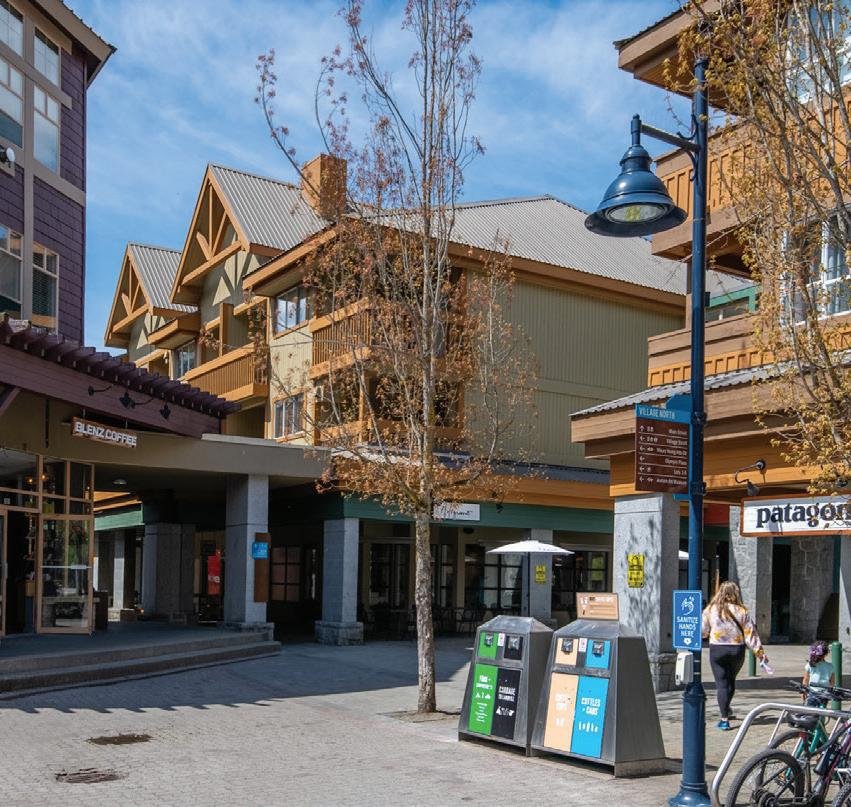

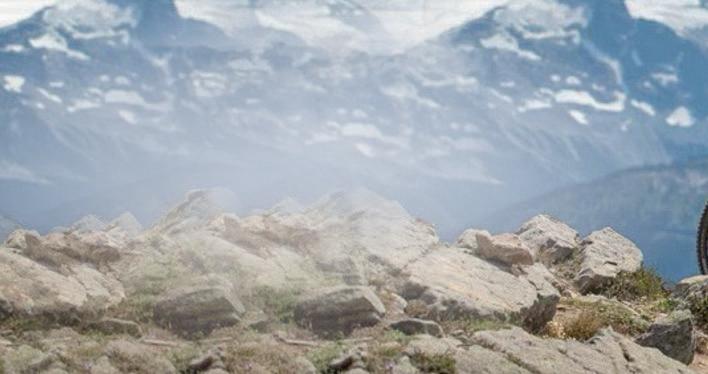
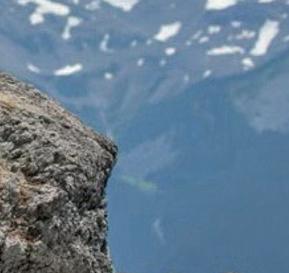
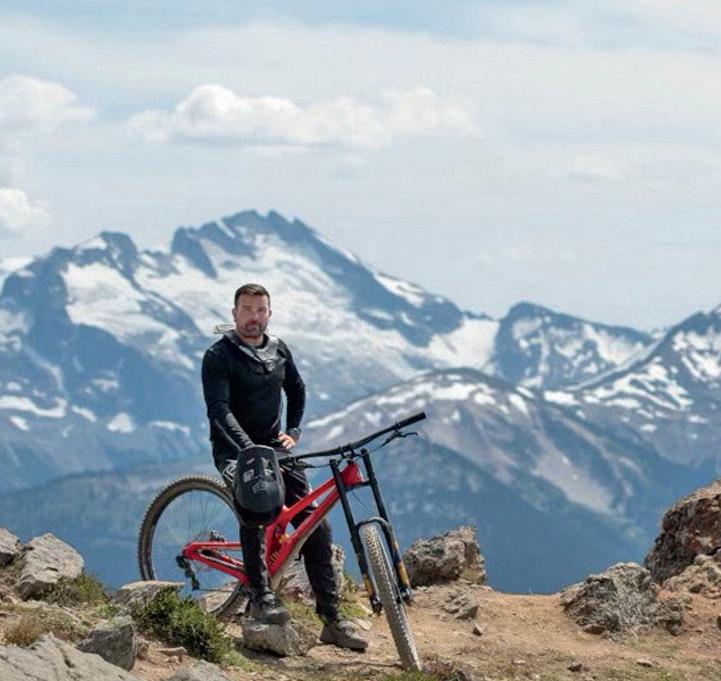


“It’s an honour to be a part of this kind of stuff even though I didn’t get to meet Stevie in person,” said Höll in a press release. “To see the Canadians following in his footsteps and to see what he did for the Canadian kids is amazing! The track definitely shows you how gnarly Stevie Smith was as a rider, because it’s super full on, it’s so hard, but it’s also really Canadian.”
Likewise, Ferguson came away with a very healthy respect for the 1199 course and all of its twists and turns. “It was crazy long from top to bottom,” she remarked. “There’s big features and lots of tech, so you can’t really switch off and rest anywhere. Definitely one of the gnarliest tracks I’ve raced, but also one
of the best.”
“It was a pretty challenging weekend,” Miller added. “It’s a brand new track. The holes are big, the features are big and sendy. It’s been a few years since I’ve done a high-level downhill race, so I think with that in mind, I’m proud of how I was able to perform.
cap remains the 2017 UCI Mountain Bike World Championships. She locked up Canada’s first elite downhill world title in 27 years in Cairns, fending off two-time world champ Myriam Nicole of France in the process.
Miller has focused primarily on enduro in recent times, and going into Sunday’s Canadian Open was three or four years removed from her last elite downhill contest. She wound up second in seeding and paced herself well throughout her run, displaying considerable technical prowess.


Discretion is oftentimes the better part of valour, which is why Miller opted to play it safe in the bottom portion of the track.

“Vali Höll, she cranked us. The fact that I get to stand on a podium with her is pretty special. You know, I’m 33, so I might not have a lot of these moments left.”




Indeed, Miller is no spring chicken. She’s built a respectable career split between downhill and enduro and is known among her peers as a tireless worker. The Squamolian has displayed longevity and resilience despite a bevy of past injuries, including multiple broken wrists in a single season.

Perhaps the brightest feather in Miller’s

“Halfway down, I had to really shut her down,” she explained. “It was feeling a little loose and I was like: ‘I just need to get to the bottom.’ I think it was just how relentless this course is.”
Unlike younger stars such as Höll and Ferguson, Miller’s competitive heyday overlapped with that of Smith. Despite all the time away, few things on Earth were going to keep her from racing on a track named and designed in his honour.
“Stevie was a good friend of mine, and to have his legacy immortalized in the greatest bike park in the world is pretty special,” she said.
Full results are available online at crankworx.com. n



“Vali Höll, she cranked us.”
- MIRANDA MILLER
AFTER TWO DECADES SPENT ELEVATING THE RESORT’S FINE DINING SCENE, THE AWARD-WINNING CHEF IS RETURNING TO WHERE SHE CUT HER TEETH, SOOKE HARBOUR HOUSE
BY BRANDON BARRETTAFTER TWO DECADES at the helm of one of Whistler’s most decorated destinations for fine dining, Bearfoot Bistro Executive Chef Melissa Craig is leaving the restaurant to return to where her vaunted career began.

The award-winning chef is leaving the village restaurant to go back to Sooke Harbour House, where she cut her teeth as a young chef just starting out. With family on the Island, and husband André St. Jacques— Bearfoot’s founder who left the restaurant in 2021—assuming the role of managing partner at the Sooke luxury eatery, the move made sense. But that doesn’t mean it was easy.
“It was very emotional. After 20 years, it was the hardest decision I’ve ever made,” said Craig. “I’m going back to where I started. My family’s on the Island, and there’s an opportunity for André and I to do something together.”
Known for her penchant for elevated, indulgent cuisine drawing on the finest ingredients from B.C. and around the world, Craig initially came to Bearfoot as
something of a prodigy in Canadian cheffing circles. After graduating from culinary school, at the age of 20, she became the first woman to win the Canadian National Apprentice Competition. She finished her apprenticeship at Sooke Harbour House on the Island, before a season spent as sous-chef at the B.C. luxury fishing resort, King Pacific Lodge, and a stint in Australia, cooking and travelling along the way.
Upon her return to B.C., she was offered the executive sous-chef position at Bearfoot, and quickly rose through the ranks, first as chef de cuisine and then, within a year, as executive chef, no small feat for a 25-yearold.
The accolades continued for Craig in 2008, when she was crowned the country’s top chef at the Canadian Culinary Championships at just 28 years old. The win cemented Craig’s status in the national culinary landscape, along with the frenzy of the 2010 Winter Olympics, when Bearfoot pumped out breakfast, lunch, and dinner to well-heeled international guests for 17 days straight, with barely a moment to breathe, let alone sleep.
(“It was madness,” Craig told Montecristo Magazine in 2011.)
But the reserved Craig was never much one for the spotlight. You get the sense the many accolades she’s earned mean far less than sending her loyal regulars home happy, with a belly full of her inventive cuisine, along with the ample time she’s spent mentoring Bearfoot’s kitchen crews to be the best cooks they can be.
“I’ve realized it’s all about the team
you surround yourself with and I’ve had such a wonderful team over the years at Bearfoot,” Craig said. “I’m going to miss the Bearfoot. I’m going to miss my team, which is my family. For a lot of people in Whistler who don’t have family, we are each other’s family.”
One of those family members is Dominic Fortin, the former executive pastry chef at Bearfoot, who left to oversee pastry for rival restaurant group, Toptable, which operates Whistler’s Araxi, Bar Oso and Il Caminetto. Now, similar to Craig, Fortin’s career is coming full-circle with a return to Bearfoot as its culinary director.
“He was definitely my first choice,” Craig said. “We’ve worked together for so long and even after working together, we talk every day. He’s got the leadership skills, the right temperament, and we communicate all the time, so he’s going to help me, I’m going to help him. It seems like a very natural bestcase-scenario progression.”
Fortin starts in his new role Aug. 15.
Marc Des Rosiers, Bearfoot’s director of marketing communications, said the restaurant is “very privileged” to have had Craig at the reins for as long as it did, but that Fortin is well equipped to carry on her legacy, given his experience and friendship with the chef.
“Everything we do will honour Melissa’s legacy,” he said. “We shouldn’t be expecting a lot of change to begin with, because it’s the same team in the kitchen and Dominic knows what the Bearfoot Bistro is all about, so he’s going to continue the great work Melissa did.”
Craig returns to a much different Sooke Harbour House than when she was first there. Long considered one of Canada’s best hotels, the 28-room waterfont resort and fine dining restaurant was purchased by Frederique and Sinclair Philip in the 1970s, becoming known for its locally sourced food grown on the property, along with its quality wine cellar. But the Philips later faced financial troubles and became embroiled in a lengthy dispute with Tim Durkin, representing SHH Management Ltd., and SHH Holdings Ltd., who had initially agreed to buy the hotel before backing out of the deal. Durkin was eventually ordered to pay the couple $4 million and was ordered deported from Canada.
Real estate investment firm IAG bought Sooke Harbour House in 2020, shortly after the pandemic began, in a court-ordered sale prompted by a foreclosure. The company then offered the property for sale for $13.3 million in September 2022, but it did not sell. Since then, the property has undergone significant renovations, both to the interior and exterior, including the addition of a large patio area for outdoor dining.
“I am very excited for this new chapter and project,” Craig said.
As the upgrades near completion, ownership is targeting late fall or early winter for reopening.
Craig said, while the vision for the reimagined hotel and restaurant is still being formulated, “it will be respectful to what it was and sticking very Canadian.”
Learn more at sookeharbourhouse.com. n









OPEN DAILY: 6 a.m. to 9 p.m.
Flex-reg’ classes have a separate fee and allow you to register for classes on the days that fit your schedule.
R REGISTERED FITNESS


Registered fitness classes have a separate fee and a defined start and end date.

Pre-registration is required for the entire set of classes.
I INCLUDED FITNESS
These classes are included with


ARENA SCHEDULE
Please see whistler.ca/recreation for the daily arena hours or call 604-935- PLAY (7529)
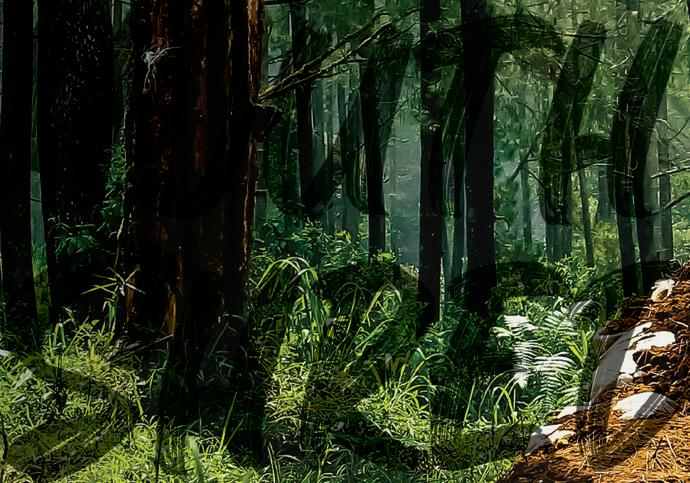
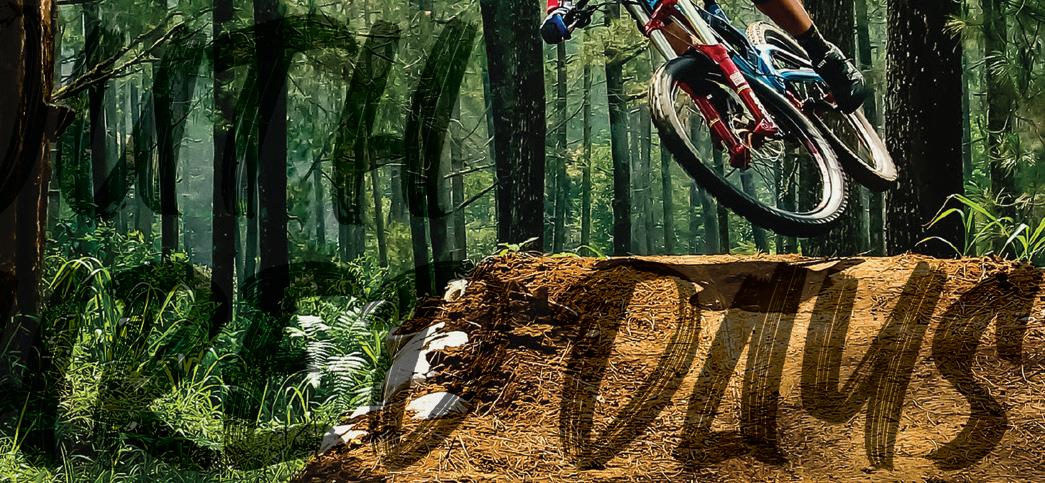







NELSON SHARES THE HONOUR WITH MACK PAUL FROM MUSQUEAM NATION, RAY NATRAORO OF SQUAMISH NATION AND OLIVIA GEORGE OF TSLEIL-WAUTUTH NATION
BY DAVID SONGLEVI NELSON of Lil’wat Nation is one of four Indigenous artists selected to design the visual identity for the 2025 Invictus Games in Whistler. Nelson joins Mack Paul of Musqueam Nation, Ray Natraoro from Squamish Nation and Tsleil-Waututh Nation’s Olivia George in developing a story about the relationship between the Canadian Armed Forces, the Invictus Games and the Indigenous communities who will host the Games on their traditional territories.
The artists come from varying backgrounds. Nelson is a painter who recently completed his master’s degree in Fine Arts from Columbia University. Paul, also known as kw las lt n, is known as an advocate for the traditional Musqueam language, h n ’ q ’ min ’ m’. Natraoro, a.k.a. Ses Siyam, has been carving masks, poles and canoes since 1994, and George is a self-taught Coast Salish artist who enjoys doing business with clients on the North Shore.
“It’s a great honour,” Nelson says of the opportunity. “I think the Invictus Games has
a really positive goal, dream, and role to play in the lives of recovering service members. They’re coming to Canada for the first time, and not only to Canada, but to the traditional territories of the Lil’wat, the Squamish, the Tsleil-Waututh and the Musqueam.
“All four of our Nations are very happy to host the Games and to be a part of the branding for it.”
While each Nation represents a distinct
unveiled, Nelson characterizes it as a floral pattern of paddles above a mountain range and ocean waves. The pattern can also be interpreted as representing the sun, while each element can be separated and used independently if desired.
Having always been a creative individual, Nelson took up his passion for visual arts in high school and now owns an undergraduate degree from Emily Carr University of Art +
Two years in the Big Apple studying at Columbia University have certainly helped the Lil’wat artist broaden his horizons.
“It opened up a lot of doors for me, being in the centre of the art world,” Nelson says. “It really helped, being extracted from the regional art style of British Columbia and moving to New York. It shifted my work in a way that I think could potentially reach a broader audience in terms of relatability.”
Nelson has First Nations blood running through his veins, and his heritage will always be an integral part of who he is. Yet he also grew up in the Western Canada of today, and was educated in one of Earth’s most diverse cities. For Nelson to make meaningful art, he feels that it has to come from his soul, and he is influenced by more than just strictly Indigenous channels.
Above all, he believes that art has always been a compelling medium when it comes to sparking dialogue and shaping popular culture.
culture, language and people, there is a healthy amount of cross-pollination between them. They cross through one another’s lands often, and Nelson says there has been much collaboration in recent times as people have rediscovered art forms like blanket weaving.
The same spirit of cooperation is found in Nelson, Paul, Natraoro and George’s efforts to visually brand the Invictus Games. While their design has not yet been publicly
Design in Vancouver. His work is on display in the permanent collection of Whistler’s Audain Art Museum and the VGH & UBC Hospital Foundation Art Collection, as well as several private collections across Canada.
Nelson describes himself as a professional contemporary Indigenous artist whose paintings embody Coast Salish and Northwest Coastal culture. He finds looking into stereotypes fascinating and dabbles in the abstract and fragmentary genres.

“Art does have the ability to say what we can’t say with words,” he says. “It relates to the imagination, it relates to the mind and to the way we see. And I think, when we put out art that is from the heart and that is truthful—and from our own experiences or a human experience—we reach a wider audience, unite people and become a part of the social fabric.”
For more information about the 2025 Invictus Games, visit invictusgames2025.ca. n
“Art does have the ability to say what we can’t say with words. It relates to the imagination...”
- LEVI NELSON

 BY CRISPIN WELLBURN
BY CRISPIN WELLBURN
THE SPEARHEAD TRAVERSE, which links Whistler and Blackcomb via a horseshoeshaped route that takes participants across the peaks of the Spearhead Range, is one of the most popular trips for backcountry skitouring today.
While the route is now completed routinely by hundreds of participants, it was pioneered in May of 1964 by members of the University of British Columbia’s Varsity Outdoor Club (VOC). The first recorded mountaineering attempts in the Spearhead occurred as early as 1923, and the British Columbia Mountaineering Club expedition, led by Neal Carter, made many of the first recorded ascents of the Garibaldi region in 1925. The VOC’s 1964 expedition across the traverse hoped to make up for an earlier attempt by the club in 1954 that was called off due to inclement weather.


Mountain, the most westerly point of the range. Here, they established their first camp, christening it “Bonfire Camp,” knowing that this was likely the last opportunity to have the luxury of an evening bonfire. Their journey began in earnest the day after, setting off from the treeline to get within striking distance of the summits of both Blackcomb Mountain and the neighbouring Spearhead Mountain. After bagging both Blackcomb and Spearhead, the party was able to descend and begin the journey across the Decker Glacier in the shadow of Decker Mountain before concluding their day on Trorey Glacier and establishing “Cannonball Camp,” so named for the snowballs that rolled through the campsite while they slept.
The third day brought bad weather, forcing the group to halt progress while providing ample opportunities to make equipment repairs. The weather let up by the fourth day, sending the party towards both Mount Trorey and Mount Pattison. At this point, the group came up with a unique
In 1964, VOC members Alistair MacDonald, Karl Ricker, Bert Port and Chris Gardner were drawn to the Spearhead Traverse for a variety of reasons. They had acquired plenty of information from other mountaineering efforts in the region concerning both Blackcomb and Whistler mountains, which would bookend their route. Additionally, proposed skiing development on Whistler Mountain and the prospect of a new VOC cabin in the region prompted the group to investigate potential backcountry ski-touring routes.


The party of four, equipped with skitouring gear, 10 days’ worth of food and a hunger for adventure, caught the train up to Rainbow Station and proceeded to make their way into the treeline of Blackcomb

strategy in order to complete more ascents: by splitting into two, they could separate at the col (the lowest point between two mountain peaks) in order to climb adjacent peaks. In this manner, they were able to summit both Trorey and Pattison before reconvening for lunch at their previous campsite and then crossing onto Tremor Glacier. The group then circumnavigated the north side of Mount Tremor and scrambled up to the col between it and Mount Shudder, hacking the ice and snow in order to make room for two tent platforms and establishing “Platform Camp.” At the end of the fourth day, the party was approaching the head of the valley, which would mark the midpoint of their journey.
Check back next week for Part 2. n



four, equipped with ski-touring gear, 10 days’ worth of food and a hunger for adventure, caught the train up to Rainbow Station...



> Rebagliati Park

> Free


It’s another edition of Squamish’s hottest monthly event, The Big Phat Comedy Show, featuring a mix of pro and emerging comics, along with some funky live music to keep you in the mood.
This month, we’ve got “Canada’s angriest Asian,” Robert Peng (Yuk Yuk’s, Seattle International Comedy Competition), who channeled his nerdy energy as an engineer into a thriving stand-up career. We’re also incredibly excited to bring the absolute OG of Squamish comedy, Kelly Dyer, to the stage, along with Poet Next Door founder and host, Squamish’s own Steph Moothu, and a whole host of other funny folks from across the Sea to Sky and Lower Mainland.

Plus, as always, we’ve got live tunes both before and after the comedy to get the vibes just right.
> July 28, 7 p.m.
> Match Eatery & Public House, Squamish > $20 at the door




Join us for a live and local music series every Sunday until Sept. 3 in Rebagliati Park. Immerse yourself in diverse genres, connect with fellow music lovers, and let the melodies transport you to a world of sonic delight. Don’t miss this vibrant community experience where live music meets the beauty of nature. These concerts are free and everyone is welcome. Catch Introduce Wolves on July 30.
> Every Sunday until Sept. 3, 1 to 3 p.m.






A feast for your senses, the Whistler Farmers’ Market features local produce, tasty food, local artisans, live entertainment and family activities. Markets happen every Sunday until Thanksgiving on Oct. 8, with the addition of Saturday markets on Aug. 5, Sept. 2 and Oct. 7.



> Sunday, July 30
> Upper Village

> Free


The Whistler Mature Action Community’s Making Connections is a weekly program for people with dementia and their caregivers, held on Wednesday mornings and funded thanks to a Government of Canada New Horizons for Seniors Grant. More like a social club, this program starts with 45 minutes of gentle fitness, followed by games and brain-stimulating activities, and socializing over a light lunch. The goal is to slow cognitive decline in the afflicted and allow caregivers to bond, share experiences and develop their own support network. The cost is $5 per person per session. Registration and prepayment for the month is required but you can join mid-month. No drop-in at this time.
Try a session for free by contacting cdkriz@gmail. com. Register at whistlermac.org under the Events tab, Making Connections Program.

> Aug. 2
> Our Lady of the Mountains Catholic Church


> $5

GUIDE
Here’s a quick look at some events happening in Whistler this week and beyond. FIND MORE LOCAL EVENT LISTINGS (and submit your own for free!) at piquenewsmagazine.com/local-events



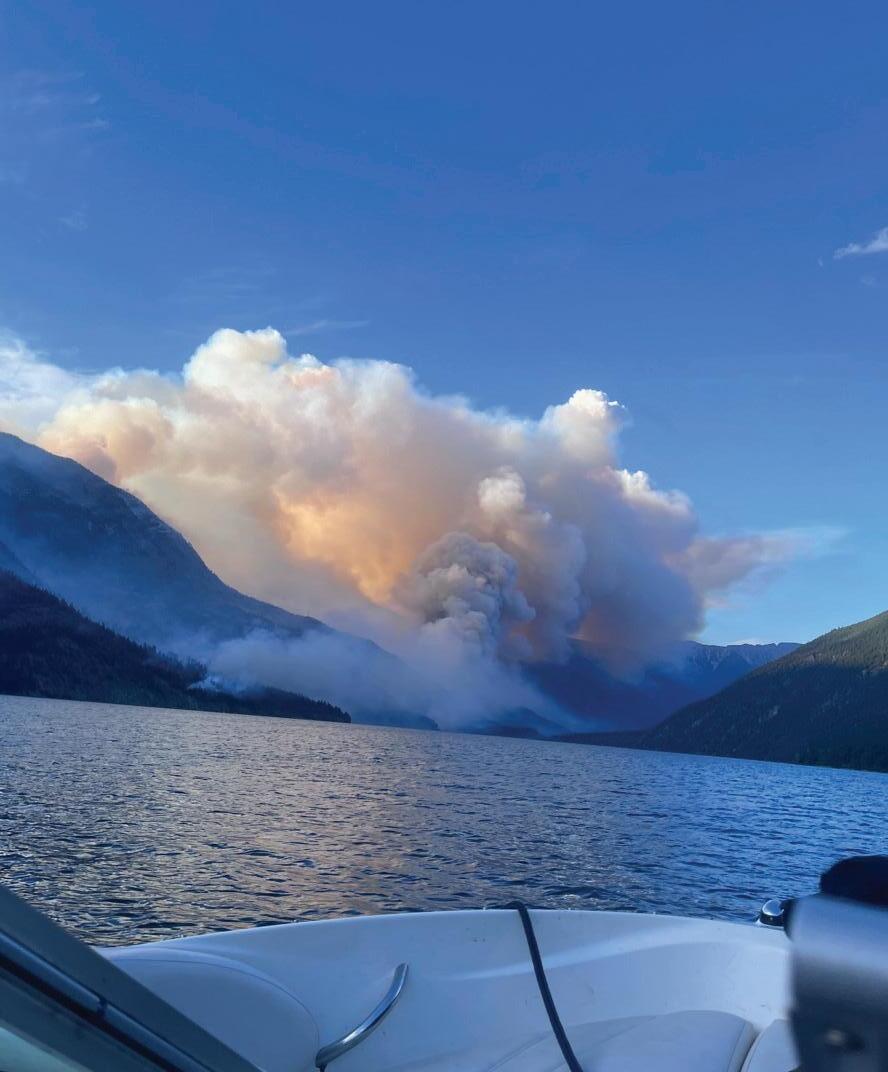







ARIES (March 21-April 19): You are about to read a thunderbolt of sublime prophecies. It’s guaranteed to nurture the genius in your soul’s underground cave. Are you ready? 1. Your higher self will prod you to compose a bold prayer in which you ask for stuff you thought you weren’t supposed to ask for. 2. Your higher self will know what to do to enhance your love life by at least 20 per cent, possibly more. 3. Your higher self will give you extra access to creativity and imaginative powers, enabling you to make two practical improvements in your life.
TAURUS (April 20-May 20): In 1991, John Kilcullen began publishing books with “for Dummies” in the title: for example, Sex for Dummies, Time Management for Dummies, Personal Finance for Dummies, and my favourite, Stress Management for Dummies. There are now more than 300 books in this series. They aren’t truly for stupid people, of course. They’re designed to be robust introductions to interesting and useful subjects. I invite you to emulate Kilcullen’s mindset, Taurus. Be innocent, curious, and eager to learn. Adopt a beginner’s mind that’s receptive to being educated and influenced. (If you want to know more, go here: tinyurl.com/TruthForDummies)
GEMINI (May 21-June 20): “I could be converted to a religion of grass,” says Indigenous author Louise Erdrich in her book Heart of the Land. “Sink deep roots. Conserve water. Respect and nourish your neighbours. Such are the tenets. As for practice—grow lush in order to be devoured or caressed, stiffen in sweet elegance, invent startling seeds. Connect underground. Provide. Provide. Be lovely and do no harm.” I advocate a similar approach to life for you Geminis in the coming weeks. Be earthy, sensual, and lush. (PS: Erdrich is a Gemini.)
CANCER (June 21-July 22): I hereby appoint myself as your temporary social director. My first action is to let you know that from an astrological perspective, the next nine months will be an excellent time to expand and deepen your network of connections and your web of allies. I invite you to cultivate a vigorous grapevine that keeps you up-to-date about the latest trends affecting your work and play. Refine your gossip skills. Be friendlier than you’ve ever been. Are you the best ally and collaborator you could possibly be? If not, make that one of your assignments.
LEO (July 23-Aug. 22): There are two kinds of holidays: those created by humans and those arising from the relationship between the sun and Earth. In the former category are various independence days: July 4 in the U.S., July 1 in Canada, July 14 in France, and June 2 in Italy. Japan observes Foundation Day on Feb. 11. Among the second kind of holiday is Lammas on Aug. 1, a pagan festival that in the Northern Hemisphere marks the halfway point between the summer solstice and autumn equinox. In pre-industrial cultures, Lammas celebrated the grain harvest and featured outpourings of gratitude for the crops that provide essential food. Modern revellers give thanks for not only the grain, but all the nourishing bounties provided by the sun’s and Earth’s collaborations. I believe you Leos are smart to make Lammas one of your main holidays. What’s ready to be harvested in your world? What are your prime sources of gratitude?
VIRGO (Aug. 23-Sept. 22): For many of us, a disposal company regularly comes to our homes to haul away the garbage we have generated. Wouldn’t it be great if there was also a reliable service that purged our minds and hearts of the psychic gunk that naturally accumulates? Psychotherapists provide this blessing for some of us, and I know people who derive similar benefits from spiritual rituals. Getting drunk or intoxicated may work, too, although those states often generate their own dreck. With these thoughts in mind, Virgo, meditate on how you might cleanse your soul with a steady, ennobling practice. Now is an excellent time to establish or deepen this tradition.
LIBRA (Sept. 23-Oct. 22): I’m wondering if there is a beloved person to whom you could say these words by
Rumi: “You are the sky my spirit circles in, the love inside love, the resurrection-place.” If you have no such an ally, Libra, the coming months will be a favourable time to attract them into your life. If there is such a companion, I hope you will share Rumi’s lyrics with them, then go further. Say the words Leonard Cohen spoke: “When I’m with you, I want to be the kind of hero I wanted to be when I was seven years old.”
SCORPIO (Oct. 23-Nov. 21): Your theme for the coming weeks is “pleasurable gooseflesh.” I expect and hope you’ll experience it in abundance. You need it and deserve it!
Editor Corrie Evanoff describes “pleasurable gooseflesh” as “the primal response we experience when something suddenly violates our expectations in a good way.” It can also be called “frisson”—a French word meaning “a sudden feeling or sensation of excitement, emotion, or thrill.” One way this joy may occur is when we listen to a playlist of songs sequenced in unpredictable ways— say Mozart followed by Johnny Cash, then Edit Piaf, Led Zeppelin, Blondie, Queen, Luciano Pavarotti, and Yellow Magic Orchestra. Here’s your homework: Imagine three ways you can stimulate pleasurable gooseflesh and frisson, then go out and make them happen.
SAGITTARIUS (Nov. 22-Dec. 21): “Fire rests by changing,” wrote ancient Greek philosopher Heraclitus. In accordance with astrological omens, I ask you to meditate on that riddle. Here are some preliminary thoughts: The flames rising from a burning substance are always moving, always active, never the same shape. Yet they comprise the same fire. As long as they keep shifting and dancing, they are alive and vital. If they stop changing, they die out and disappear. The fire needs to keep changing to thrive! Dear Sagittarius, here’s your assignment: Be like the fire; rest by changing.
CAPRICORN (Dec. 22-Jan. 19): There’s ample scientific evidence that smelling cucumbers can diminish feelings of claustrophobia. For example, some people become anxious when they are crammed inside a narrow metal tube to get an MRI. But numerous imaging facilities have reduced that discomfort with the help of cucumber oil applied to cotton pads and brought into proximity to patients’ noses. I would love it if there were also natural ways to help you break free of any and all claustrophobic situations, Capricorn. The coming weeks will be a favourable time to hone and practice the arts of liberation.
AQUARIUS (Jan. 20-Feb. 18): “Silent gratitude isn’t very much use to anyone,” said Aquarian author Gertrude B. Stein. She was often quirky and even downright weird, but as you can see, she also had a heartful attitude about her alliances. Stein delivered another pithy quote that revealed her tender approach to relationships. She said that love requires a skilful audacity about sharing one’s inner world. I hope you will put these two gems of advice at the centre of your attention, Aquarius. You are ready for a strong, sustained dose of deeply expressive interpersonal action.
PISCES (Feb. 19-March 20): According to the International Center for Academic Integrity, 95 per cent of high school students acknowledge they have participated in academic cheating. We can conclude that just one of 20 students have never cheated—a percentage that probably matches how many non-cheaters there are in every area of life. I mention this because I believe it’s a favourable time to atone for any deceptions you have engaged in, whether in school or elsewhere. I’m not necessarily urging you to confess, but I encourage you to make amends and corrections to the extent you can. Also: Have a long talk with yourself about what you can learn from your past cons and swindles.
Homework: What single good change would set in motion a cascade of further good changes? Newsletter. FreeWillAstrology.com.
In addition to this column, Rob Brezsny creates EXPANDED

In-depth







Fairmont Chateau


Whistler Resort is growing its Housing portfolio and sourcing additional Chalet and Condo Rental contracts for our Hotel Team Members. Our leaders are mature, career driven drivers that know the word respect. Contract terms for property Owners are stress free with no commissions and includes representation from our 4 person fulltime Housing Department working with you 24/7; maintaining all aspects of the tenancy including quarterly inspections.


A great next move for Whistler property Owners that have tired with the Airbnb game or Property Fees. Let’s see if we can make a match and develop a long-term relationship here. General inquiries please email mark.munn@fairmont.com
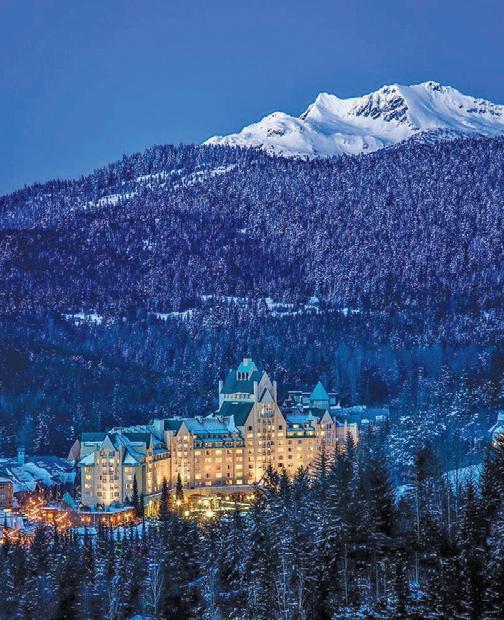












Come work for one of Canada’s most unique destinations and check a bucket list job. Currently looking for:

Why work for Tyax:

• Deeply subsidized, modern townhouse-style accommodation.
• Three complimentary meals per day.
• Staff use of spa facilities, gym and sports equipment.
• Opportunities to go heliskiing during the winter.
• Don’t pay premium for your cost of living.
• Get a job where you can really put some money aside for your travel plans.
• Experience the amazing true Canadian wilderness.
• Join a fun and welcoming diverse team from all over the world.
• Work for a family size company where team members truly come first.
• 2 consecutive days off per week to enjoy what the region has to offer. tyax.com/employment careers@tyax.com
Fridays - Gentle Fit 12-1 pm w Hazel Saturdays - Zumba
am w Susie
Sundays - Pilates 9-10 am w Erin
Tuesdays - Aqua Fit Deep End
am w M-A
Wednesdays - Zumba 6:30-7:30 pm w Carmen
Thursdays - Low Impact Strength
am w Lou
FullTime SeekingLaborer,apprenticesand carpentersforfulltimeposition buildingcustomhomesinWhistler BCandarea.Noexperiencenecessary,willprovidetraining.Competitivewagesandgreatbenefit packageavailableafter3month probation.Dental/extendedmedical,RRSPcontribution,gasallowances.Ifinterested,pleasefeel freetocontactthroughemailor callAlanat604-849-1304604-849 -1304 bmakconstruction@gmail.com
WhistlerPersonnelSolutions Full-time,part-time&tempjobs. Nocost,nostrings.604-905-4194 www.whistler-jobs.com



piquenewsmagazine.com/ local-events/

Senior Wastewater Treatment Plant (WWTP) Operator
Full Time, Permanent (CUPE 2010)
Responsible for the operation and maintenance of our Class II Waste Water Treatment facility, we’re looking for candidates who are comfortable working independently and understand the health and safety measures related to WWTP operations.
Join the Village of Pemberton team and give back to this incredible community by being a part of the exciting projects taking place throughout the Village. In addition to the satisfaction of giving back to the community, take a look at what our benefit package has to offer for all full time, permanent staff:

9-Day Fortnight - BC Municipal Pension Plan - Extended Medical Benefits - Dental Coverage - Vision Benefits - Free Fitness Centre access - Keeping it Active Allowance
Interested? Send your resume to recruiting@pemberton.ca. For a full job description or to learn more, visit pemberton.ca/employment
Looking to contribute to your local community? Consider a career in local government. Join the SLRD’s team of dedicated staff who work together to make a difference in the region.
Headquartered in Pemberton, the Squamish-Lillooet Regional District (SLRD) delivers a wide range of regional, sub- regional and local services to its residents. The SLRD is a BC Regional District consisting of four member municipalities (Squamish, Whistler, Pemberton, Lillooet) and four electoral areas. Services include land use planning, solid waste management, building inspection, fire protection, emergency preparedness, 911 services, recreation, water and sewer utilities, regional transit, trails and open spaces as well as financial support for various community services. The region contains some of the most spectacular forests, waterways, and mountains in the province and affords an endless range of opportunities for outdoor adventure, making it an exceptional place to live, work and play.


The SLRD is currently accepting applications for the following positions:
• Legislative Assistant (Regular, Full-time)
• IT Manager (Regular, Full-time)
• Environmental Coordinator (Regular, Full-time)

The SLRD offers a competitive compensation and extended benefits package, participation in the Municipal Pension Plan, a compressed work week (nine-day fortnight), hybrid remote work opportunities, and learning and career development opportunities.
For more information on these career opportunities, please visit www.slrd.bc.ca/ employment. To apply, please submit a cover letter and resume (preferably in pdf format) by email to careers@slrd.bc.ca
We sincerely thank all applicants for their interest, however, only those shortlisted will be contacted.
is hiring a DEVELOPMENT MANAGER to help us end youth homelessness
Zero Ceiling is committed to ending youth homelessness by providing young adults with unconditional support, advocacy, and opportunities. We are working towards equity and justice for young adults who have been marginalized, including Indigenous, 2SLGBTQ+, and racialized young people.
We are seeking a compassionate, relationship-centered leader, responsible for fundraising, communications, and community engagement for Zero Ceiling. They build relationships with funders, donors, partners, and volunteers to provide stable revenue for Zero Ceiling's programs and mission
You will:
• Lead revenue development activities including grants, major gifts, events, and sponsorships

• Secure and execute government funding contracts

• Lead delivery of Zero Ceiling's communications strategy
• Professional Qualifications & Skills:
3-5 years experience in non-profit development and fundraising, or equivalent experience and education
Proven track record of successfully securing gifts, grants, and sponsorships.
• Wage band: $30-35/hour (based on experience)
• Benefits: 3 weeks vacation to start, extended health benefits, RSP matching, 10 sick days, wellness benefit
• Hours: Full-time (36hrs) Monday to Thursday, plus 1 Friday/month
We enthusiastically welcome applications from all qualified people, including those with lived experience, racialized people, people of all sexual orientations, women and trans* people, Indigenous peoples, those with diverse abilities, mental illness, and from all social strata.
Send your resume and cover letter to fran@zeroceiling.org
Find the full job description at zeroceiling.org/join-our-team

Deadline ASAP
Looking for a great job and accommodation in Whistler?

Our ideal candidate:
• Professional and friendly
• Passion for exceptional guest service
• Multitasker who enjoys working in a fast paced environment
• Flexibility to work evenings and on weekends
What we offer:
• Competitive wage
• Affordable staff accommodation
• Benefits package including dental and wellness
• Recreational allowance & ski season pass financing
• Industry discounts on Helly Hansen apparel

APPLY NOW!
whistlerathletescentre.com/careers


The Pinnacle Hotel Whistler has the following positions available:
• ROOM ATTENDANTS
• HOUSEMAN AM/PM
Please reply by email: parmstrong@pinnaclehotels.ca
We are looking to hire another member to our team at Straightline.

Experience in Plumbing is required. Gas Fitting and HVAC would be preferred but not essential.
Wages are based on experience, Starting between $44-52/hr. Part-time or Full-time positions available. Accommodations are available.
Please call 604-935-8771 or email straightlineplumbingandheating@gmail.com for more information.
We offer:

• Immediate Whistler housing available


• Extended Health and Dental benefits for you and your family
• 20cm snow rule & mental-health bike days
• Flexible schedule & awesome staff parties!
• Work-life balance is as important to us as it is to you! Send your resume to info@vispacific.com
TEAM OF DEDICATED PROFESSIONALS
Competitive Wages | Hiring Bonus | Relocation Bonus



E-mail or drop in your resume to: rory_eunson@nestersmarket.com please cc bruce_stewart@nestersmarket.com or call us at 604-932-3545

PERKS
• Competitive wage – Depending on experience

• Flexible and set schedule
• Relative training
Vacasa’s forward-thinking approach and industryleading technology help set us apart as the largest full-service vacation rental company in North America. We are seeking individuals with a passion for providing exceptional vacation experiences for our Owners and Guests.

We offer competitive wages and benefits: Travel allowance for Squamish/Pemberton-based employees OR Ski Pass/Activity allowance, Extended Medical, RRSP match, Fun & Safe Work Environment-Great Team, opportunities to grow and more.

Guest Service Agent
Assistant Housekeeping Manager


Lead Housekeeper Maintenance Technician

Apply online today! https://www.vacasa.com/careers/positions or email: paul.globisch@vacasa.com or call to find out more details at 604-698-0520
We thank all applicants for their interest but only those selected for an interview will be contacted.









Bylaw Enforcement & Animal Control
Community Planning
Economic Development
Engineering
Facilities
Fire Rescue
Public Works
RCMP
Recreation
Legislative Services
We offer competitive wages, a comprehensive pension plan and health benefits, and we are driven by our passion to serve community.
• Community Patrol Officer – Casual/On-Call (Multiple Positions)
• Plan Examiner 2 – Regular Full-Time
• Business Development Specialist – Regular Part-Time
• Manager of Environment - Regular Full-Time
• Engineering Technician – Regular Full-Time

• Custodian – Regular Full-Time
• Fire Chief - Regular Full-Time
• Utilities Technologist – Regular Full-Time
• Utilities Operator In Training (OIT) – Temporary FullTime (2 positions)
• Detachment Clerk – Casual/On-Call
• Lifeguard 1 – Regular Part-Time (20-30 hours)
• Recreation Program Instructor 1 – Biking – Casual/ On-Call (Multiple Positions)

• Clerk 2 – Casual/ On-Call
As an equitable and inclusive employer, we value diversity of people to best represent the community we serve and provide excellent services to our citizens. We strive to attract and retain passionate and talented individuals of all backgrounds, demographics, and life experiences.
Glacier Media Group is growing. Check our job board regularly for the latest openings: www.glaciermedia.ca/careers
MAINTENANCE
TECHNICIAN/CLEANER
Full Time, Year Round
*LIMITED HOUSING AVAILABLE*
Love a good challenge? Passionate about the place you call home? Tourism Whistler is looking for community-loving, mountainappreciating, environment-respecting people to join our Building Operations team.
The Maintenance Technician/Cleaner, along with the other Building Operations team members, is responsible for the general cleaning, beautification, and minor repairs of the Whistler Conference Centre, Tourism Whistler administration offices, and the Whistler Golf Club. This role requires a positive team player with cleaning/ maintenance experience.
What we offer: limited housing available, a flexible schedule offering work-life balance, a commitment to health and wellness, competitive compensation and benefits package, and a great team environment.
TO VIEW OUR CAREER OPPORTUNITIES, AND TO APPLY, VISIT US ONLINE AT: WHISTLER.COM/CAREERS.
Join our team of Plumbers and Gas Fitters
Hiring 3rd and 4th year apprentice or journeyman candidates with experience in service/repair work.
• Offering competitive wages
• Providing fully stocked truck, tools, and phone
• Extended health plan available.
• We can hire skilled foreign workers and support permanent residency applications.
• Short-term accommodation availablefree of charge. Long term housing options available as well.
Send your resume to: Dough@spearheadsph.com
Reporting to the Director of Finance, the Financial Reporting Manager will be responsible for all areas relating to financial reporting. The Manager’s role & duties will ensure accurate and timely financial statements in accordance with Generally Accepted Accounting Principles and best practices. This position will review operating procedures, company controls, and compliance measures to determine any potential hazards or breaches of conduct. This role will also provide support to the Directors.
For more information, or to apply for this position please visit our careers page https://lilwat.ca/careers/


Position Title: Program and Contracts Manager
Location: Mount Currie, BC (Hybrid negotiable)
Type: Full-time, Permanent
Salary: $65,000 to $75,000 (Based on experience)
Other Benefits: SSHS offers a competitive benefits and employment package for full-time staff
Closing Date: July 31, 2023
Status
: Full Time – Permanent Reporting
The Assistant Health Director is responsible for providing the overall leadership, direction, and management for the planning, development, implementation and administration of Maternal Child Health, Patient Travel, Assisting Living, Pq’usnalcw Health Center and Lil’wat Health and Healing Center, Programs and Services.
Position Overview: Southern Stl’atl’imx Health Society (SSHS) is seeking a highly motivated and skilled full-time Program and Contracts Manager to join our Indigenous non-profit health organization. The Program and Contracts Manager will play a pivotal role in overseeing and managing various programs and contracts and agreements aimed at improving the health and well-being of the four communities that SSHS serves: N’Quatqua, Samahquam, Skatin, and Xa’xtsa First Nations. This position requires exceptional organizational skills, strong leadership abilities, and an in-depth understanding of Indigenous culture and health issues. The successful candidate will be responsible for ensuring the effective delivery of programs, managing contracts, agreements, and partnerships, and supporting the organization’s mission “to honour the health of The People by working together to deliver holistic health services”.

Position Title: Bookkeeper
Location: Mount Currie, BC (Virtual or Hybrid negotiable)
Type: Full-time, Permanent
Salary: $48,000 to $52,000 (Based on experience)
Other Benefits: SSHS offers a competitive benefits and employment package for full-time staff
Closing Date: July 31, 2023
For more information, or to apply for this position please visit our careers page https://lilwat.ca/careers/
Resort Municipality of Whistler Employment Opportunities
• Assistant Festival, Events and Animation Coordinator
Resort Municipality of Whistler
• Human Resources Coordinator
Employment Opportunities
Position Overview: We are seeking a detail-oriented and experienced Bookkeeper to join our team. As the Bookkeeper, you will be responsible for helping manage the financial records and transactions of our organization, ensuring accuracy, compliance, and financial stability.
About Us: SSHS is a non-profit Indigenous Health Organization dedicated to improving the health and well-being of Indigenous communities. Our organization provides culturally appropriate healthcare services, programs, and initiatives to support the holistic health of Indigenous individuals and families.
• Human Resources Coordinator (Recruitment and HR Services)
· Legislative and Privacy Coordinator
For a detailed version of the job postings please contact Julia Schneider or visit our Facebook page: Southern Stl’atl’imx Health Society
· Program Leader
· Skate Host
• Lifeguard/Swim Instructor
· Lifeguard/Swim Instructor
· Wastewater Treatment Plant Process Supervisor
· Solid Waste Technician
· Labourer I – Village Maintenance
• Program Leader - Myrtle Philip Community Centre
· Accountant
· Youth and Public Services Specialist
Please submit resume and cover letter by email to Julia Schneider, Executive Assistant to the Interim Health Director, at julia.schneider@ sshs.ca. Please include in the subject line your name and the position you are applying for.
THANK YOU FOR YOUR INTEREST!



























GENERALLY, if someone hollers, “road trip!” in my direction, I grab my toothbrush and car keys and am out the door without further thought. What’s not to like about a road trip?
But I’m about to embark on a road trip that kind of makes me wish I had to stay home and have my wisdom teeth extracted. All the more painful since I’m not sure I have any to extract.
Normally, road trips are a joy. Pack some gear, some snacks, some beverages, a map before I came to unwisely rely on GPS
BY G.D. MAXWELLnavigation, and a sense of adventure. For this road trip, I’m thinking of including several dozen fire extinguishers and a Nomex® onesie.
That’s because I’m driving to Fort Simpson in the Northwest Territories. Ironically, the thought of driving there conjures up so many of the issues raised by the federal tourism ministry’s Canada 365 strategy, the coincidence is eerie.

The normal jumping-out-of-my-skin excitement at the thought of a road trip is butting up against the Wall-o’-Flames that is northern British Columbia and Alberta, and has been since May. And after running one of those gauntlets there are more fires burning in southern Northwest Territories than I’d like to think about.
This is probably a good time to mention I think the idea of driving there is, well, crazy. Under normal circumstances, I’d bail. But normal circumstances fail to include the budget-breaking amount already paid to the company that is going to raft my wonderful wife and I down the Nahanni River for 12 days.
A rational person might hit me over the head with a gentle reminder of the economic notion of sunk costs at this point. Forget about what’s already been spent and take the safe way out; money’s money, your skin’s your skin. The safe way would be to ditch the road trip in favour of a plane ticket.
The intersection of this conundrum and Canada 365 is a feature of Canadian travel known well to anyone who lives in the country and would like to venture far from home, but stay in the true north strong and free. It’s best illustrated by some people I met in Newfoundland six years ago. Finding out I lived in B.C., they said they’d love to visit the province. Asked why they hadn’t, they explained they could fly anywhere in Europe and most other places in the world for a fraction of what it cost to fly within Canada.
Having kept an eye on the fires, I thought the sane thing to do would be to check out flights. It’s virtually impossible to fly from Vancouver to Fort Simpson when I need to.
I can understand that. And from where I am, Edmonton is on the way. I can fly from Edmonton to there for $2,500. I’m assuming there are a number of other costs associated with that price, including an extra night of lodging in Edmonton, since the flight leaves
bright and early in the morning.
By comparison, I can fly from Edmonton to London for $1,400, to New York for $748, or to Paris for $1,421. All of those destinations are multiples of air miles further than the distance to Fort Simpson. Yeah, I know, law of large numbers, as in the large numbers of people who would rather fly to London, Paris or New York.
But still, if a key element of boosting Canadian tourism by almost 40 per cent in the next seven years is getting people to far-flung
lost cause for any of us who already find it far too busy. But the decisions have already been made to grow, grow, grow. Don’t blame me.
The twin soft spots in the plan are workerbees and housing. The machine in place already needs more workerbees, and there isn’t enough housing. The Chamber of Commerce is, reportedly, working on a housing and labour survey to “inform its advocacy efforts moving forward.”
Presumably the goal is to generate some hard numbers. If not, we already know
money to build the housing coming from?
The Chamber says, “The other main challenge that businesses are facing is the cost of doing business. We have seen multiple cost increases...”
If you want to see multiple, multiple cost increases, try building buildings. Every input is more expensive, in some cases obscenely so, and expanding so fast, it’s hard to get a handle on just how much it’s going to increase from the first budget to the built cost.
And once you’ve swallowed those inputs and built that “affordable” housing, you’re faced with a mortgage that’ll layer on more cost increases, as anyone who currently has a mortgage can verify. That additional cost will remain in place for five or 10 years before the rate roulette wheel spins again.

places like Fort Simpson—that ticks several of the strategic boxes, i.e., recreation and the great outdoors, Indigenous tourism—we can’t be expecting people to pay as much or more to get there as they’ll spend once they arrive. Would it be better—notwithstanding running counter to the country’s blind adherence to universality—to direct the majority of the funds and effort into established tourism hotspots where people are more likely to go?
Whistler is one of those spots. It is also, and I hate to say it, probably a lost cause. A
more of both is necessary. And the RMOW is committed to building more housing, “regardless of cost.”
This is probably a good point to put in a meaningless plug for putting the brakes on growth, but that ship has already sailed. Whatever shortages we currently have don’t seem to stop local businesses from expanding.
The primary pinch point in this endless cry for more labour and more housing to feed more business is cost. Where is the
I would humbly suggest, therefore, any advocacy efforts the Chamber cares to undertake be directed to Canada’s tourism minister and his provincial counterpart. With the town’s businesses running at less than full capacity, a strong case can be made for funds to support housing construction.
And there is historical evidence to back it up. When the provincial government of the day “bailed” Whistler out in the early 1980s, it was roundly criticized. But that investment paid off like a broken slot machine and continues to pay off every day of the year.
The feds can place their tourism money bets on far-flung parts of the country, or they can invest them where they’re more likely to see some results. My money is on the former. It’s the Canadian way. ■
The primary pinch point in this endless cry for more labour and more housing to feed more business is cost.
222-4369 Main Street: Spacious 412‘ studio in the Alpenglow with high ceilings, sunken living room and mountain views from the oversized balcony, sleeps four. Outdoor pool, hot tub, gym; strong revenue producer. Zoned Phase 2 with flexible management options. $689,000



Sherry Boyd – Boyd Team
604-902-7220
8134 Muirfield Lane: Tucked away on a private cul-de-sac, this beautiful 4 BR, 4 bath, 3,105 sq/ft CHALET allows for multiple uses with flexible zoning for full time use or nightly rentals. Enjoy the hot tub on the 470 sq/ft south facing deck. Entertainer’s dream home! $5,690,000
Connie Spear
604-910-1103
307 – 2109 Whistler Rd: Top floor end unit with multiple storage areas. Walking distance to Creekside Gondola. Zoned for full-time owner use or nightly rentals. Generate significant income through AirBnB or similar with no Tourism Whistler fees or GST! $578,000
Allyson Sutton PREC*
604-932-7609
4653 213 G2 Blackcomb Way: This peaceful one-bedroom unit in Horstman House is a dream retreat. Enjoy 1 week per month in this well managed quarter share property. Close to the Fairmont Chateau Golf Course, Lost Lake, and free upper village shuttle. Your perfect getaway awaits! $209,000
Sam Surowy
604-902-9754
702 & 704 - 4050 Whistler Way: Hilton Owners enjoy unlimited stays and a central village location offering all the amenities of a resort hotel. This lock-off 2 bed, 2 bathroom, with storage may also be rented nightly though the Hilton full-service, rental management program. $949,000


Nick Swinburne PREC* 604-932-8899
1360 Collins Rd, Pemberton: 10-Acre Country Retreat. Custom 4,404 sq ft home. Zoned for garden nursery, horse riding academy, green housing, brewery/cidery, agritourism, B&B, home business and limited weddings. $3,999,900

Carmyn Marcano
Suzanne Wilson PREC*
604-719-7646
604-966-8454
7471 Urdal Road, Pemberton: Nestled in the heart of Pemberton, this remarkable 10-acre property boasts a prime location, convenience, breathtaking 360-degree views, and endless possibilities. $6,495,000
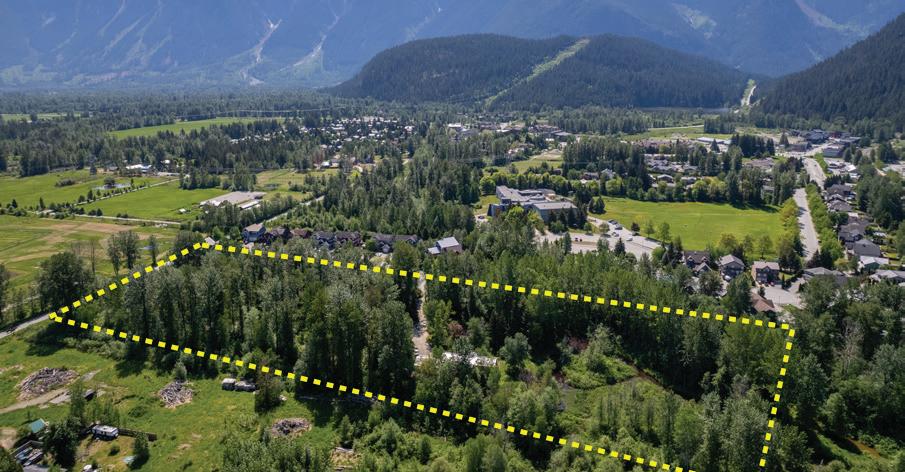
Steve Legge PREC*
604-902-3335
1307 Eagle Drive, Pemberton: A masterfully built 4br/6ba home with unobstructed views across the Pemberton Valley. Roof top deck, ready for gardens, hot tub and entertaining; 1br suite, large flex room, radiant heating, workshop, double garage and much more! Call today to view. $2,590,000 Rob Boyd – Boyd Team 604-935-9172
Whistler Village Shop 36-4314 Main Street · Whistler BC V8E 1A8 · Phone +1 604-932-1875
whistler.evrealestate.com
315 Furry Creek Drive, Furry Creek: Truly a one of a kind trophy home with extremely rare Golf + Ocean views. New hot tub with breathtaking views, a new Nootka sauna, & 1000 sqft patio. $3,899,000


Angie Vazquez PREC*
778-318-5900
Squamish Station Shop 150-1200 Hunter Place · Squamish BC V8B 0G8 · Phone +1 778-733-0611
squamish.evrealestate.com

